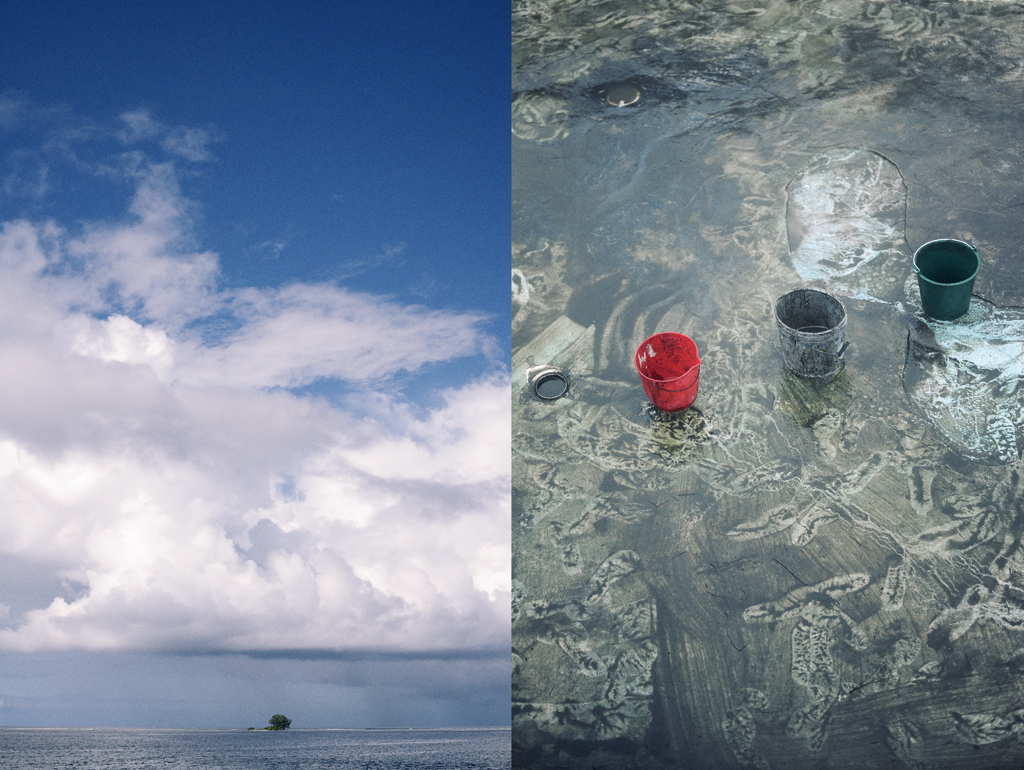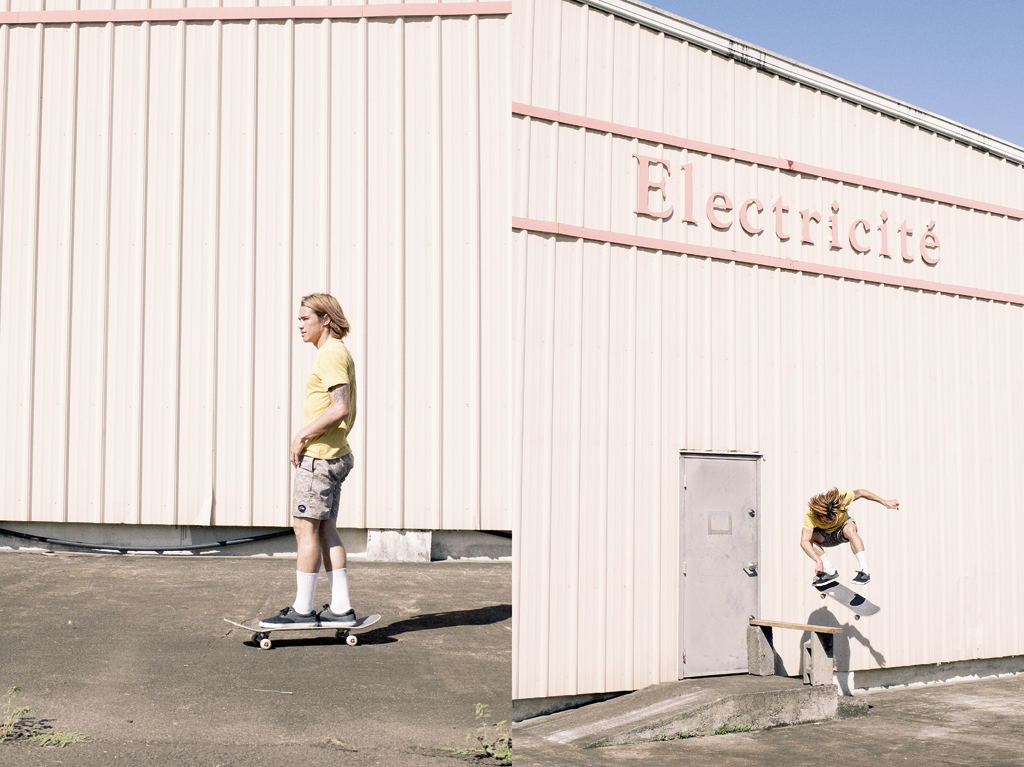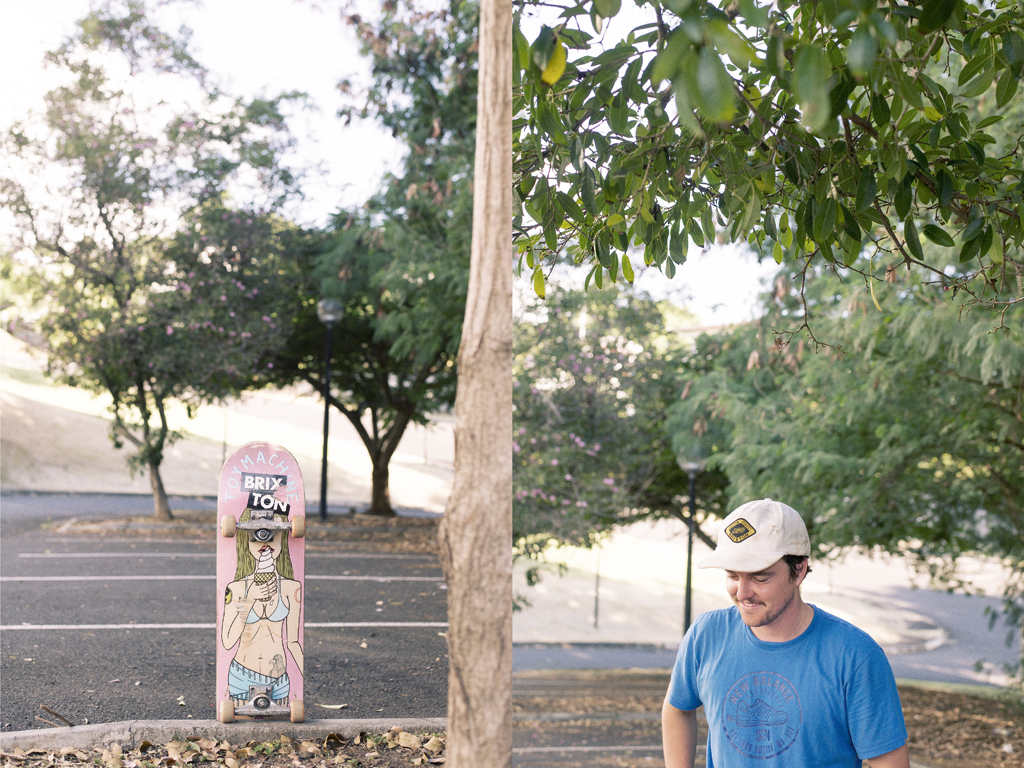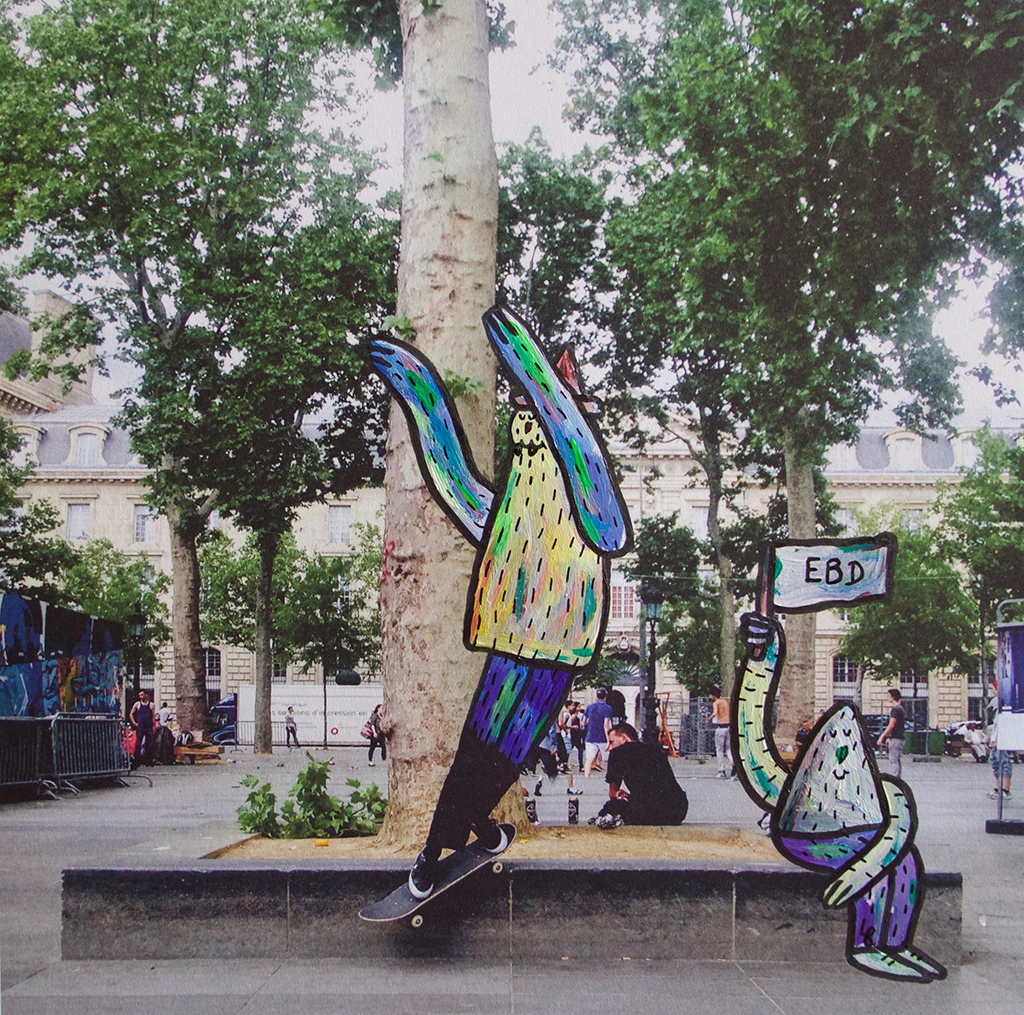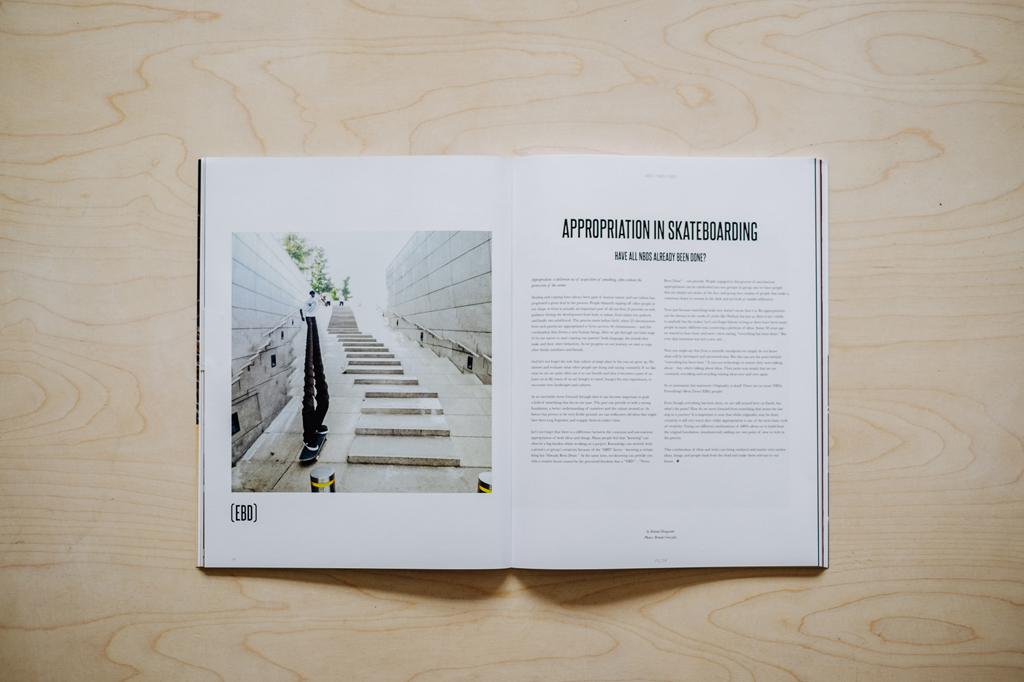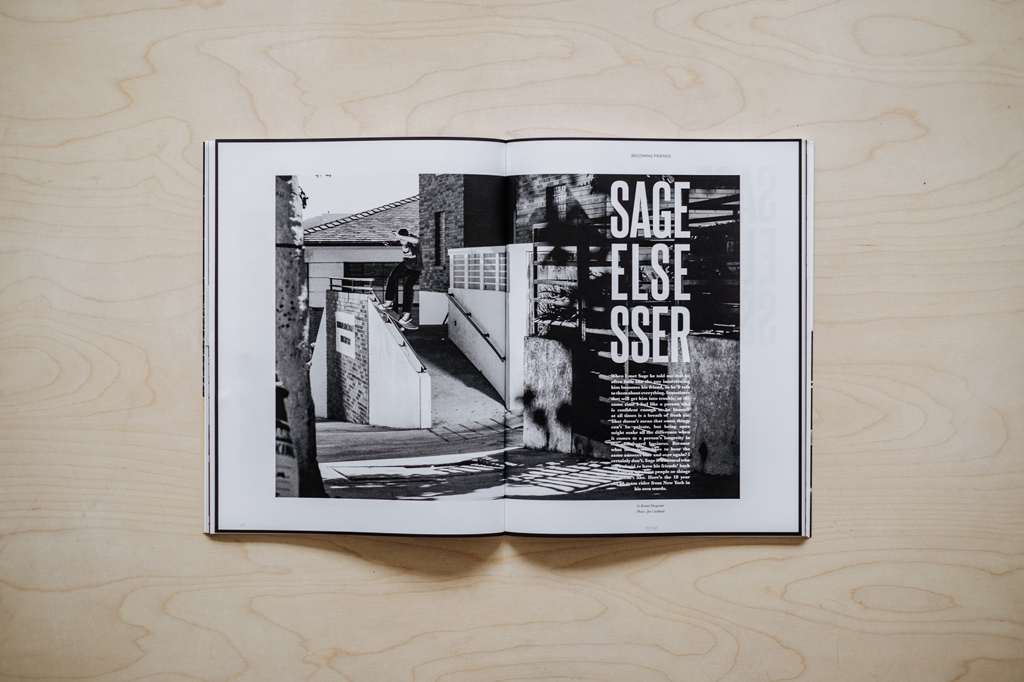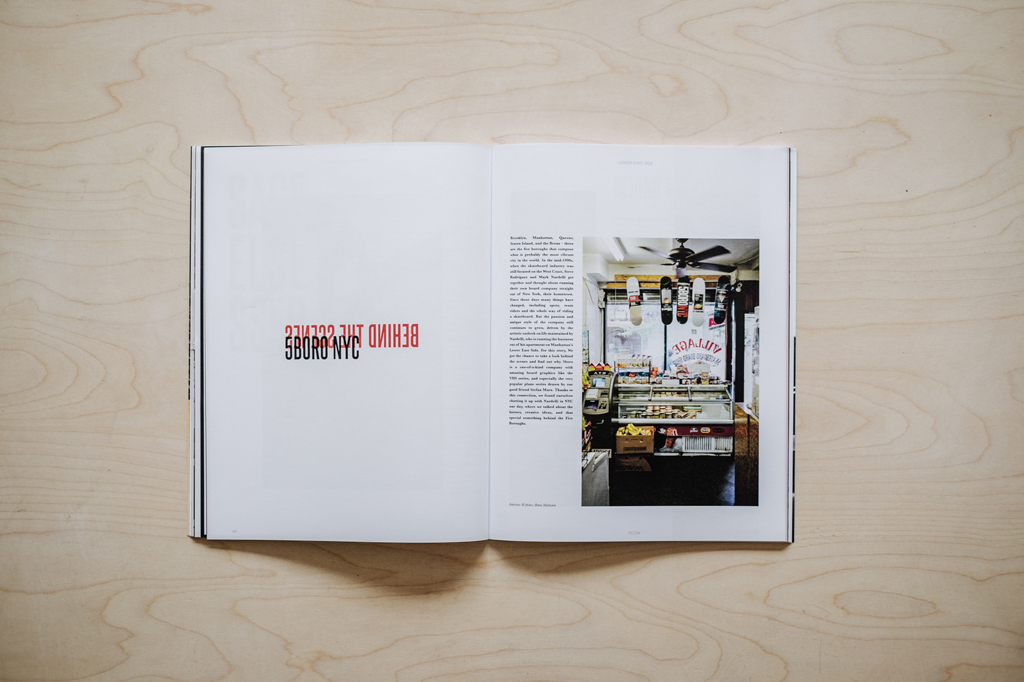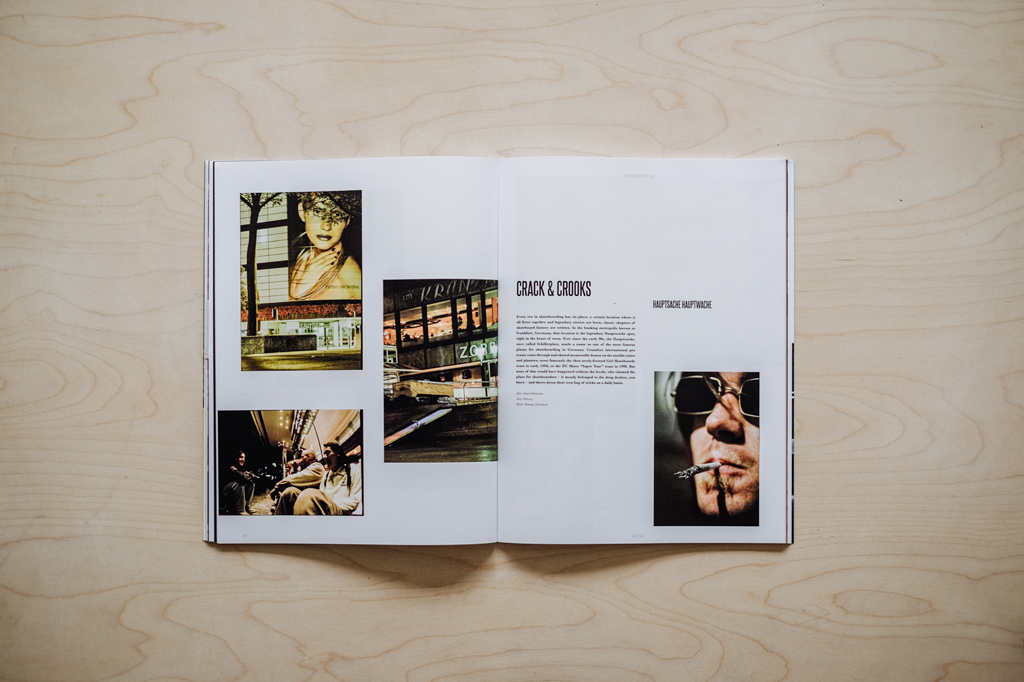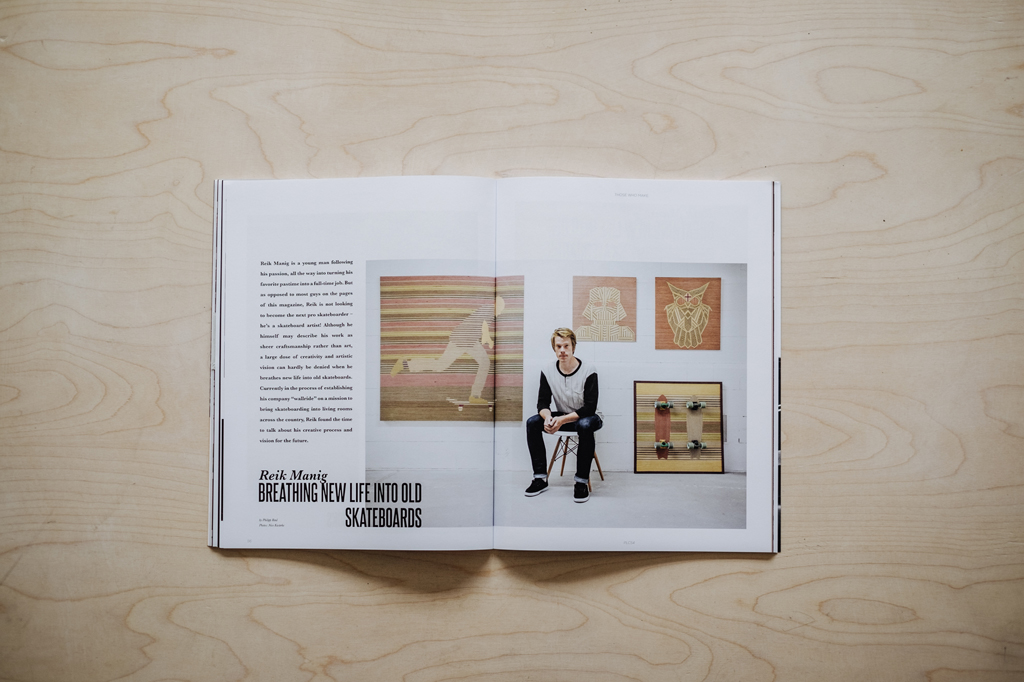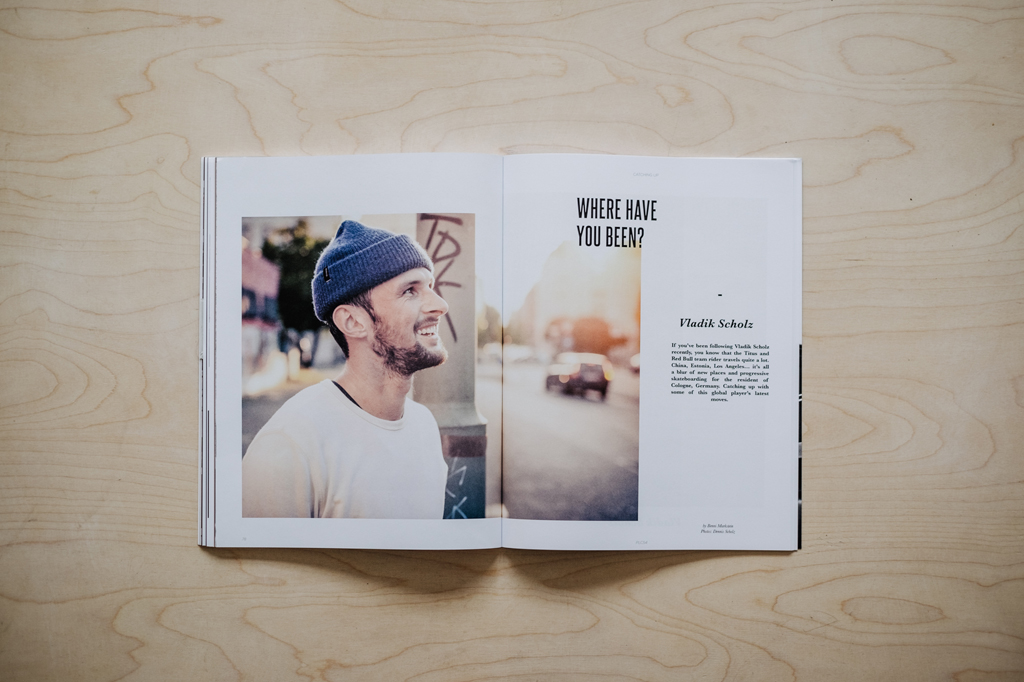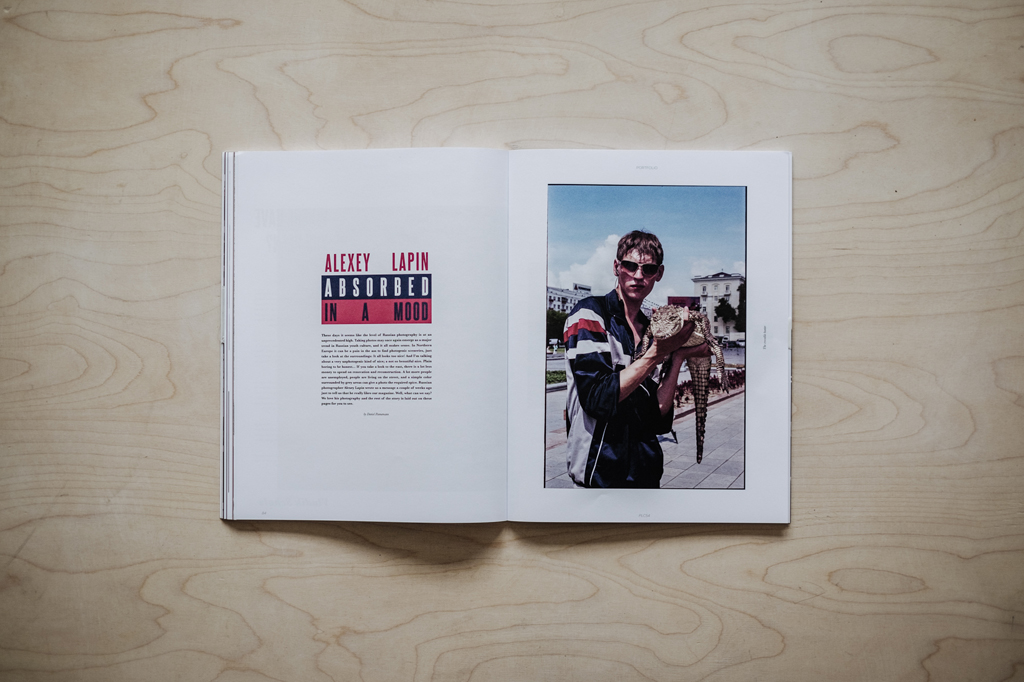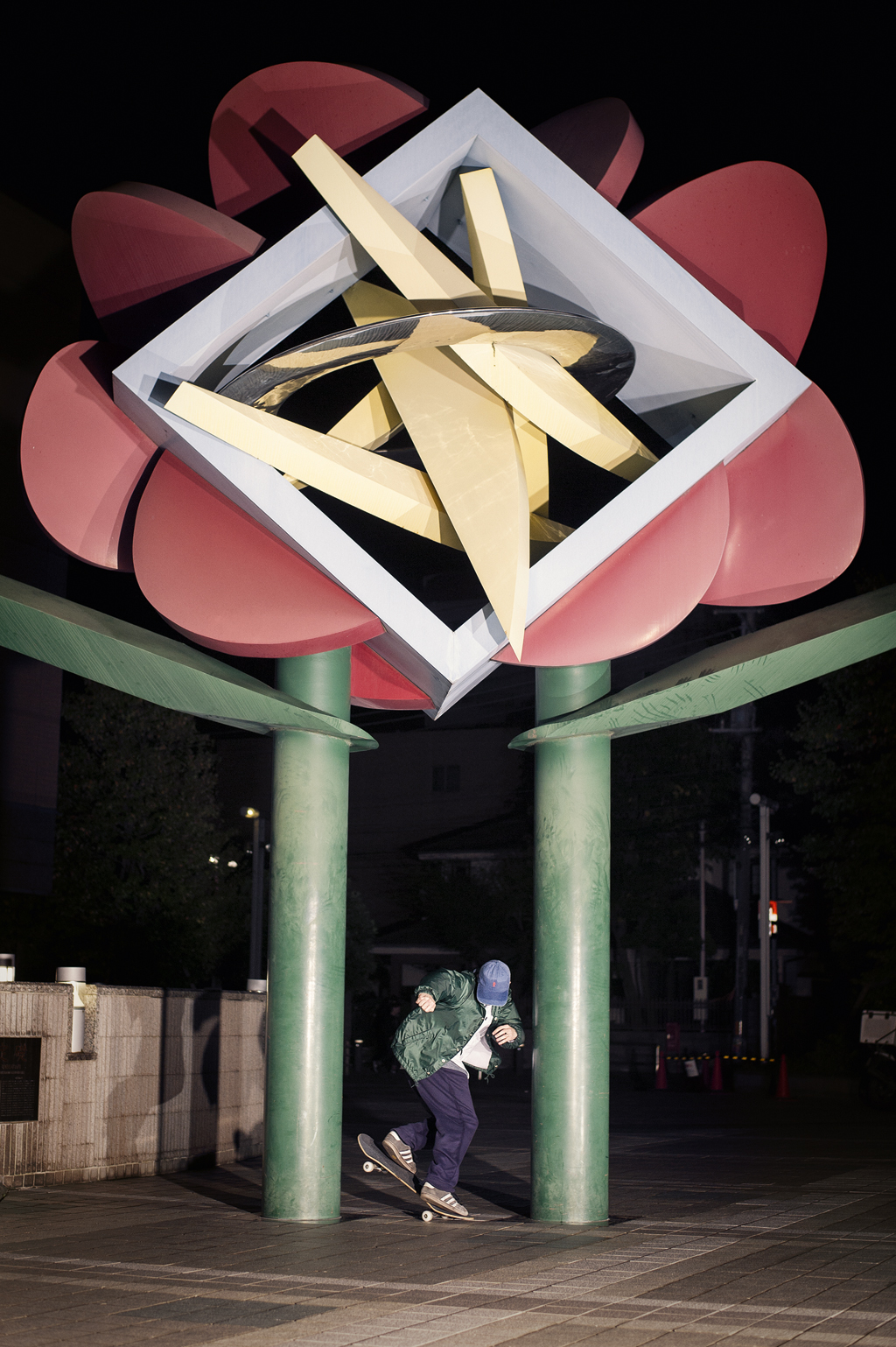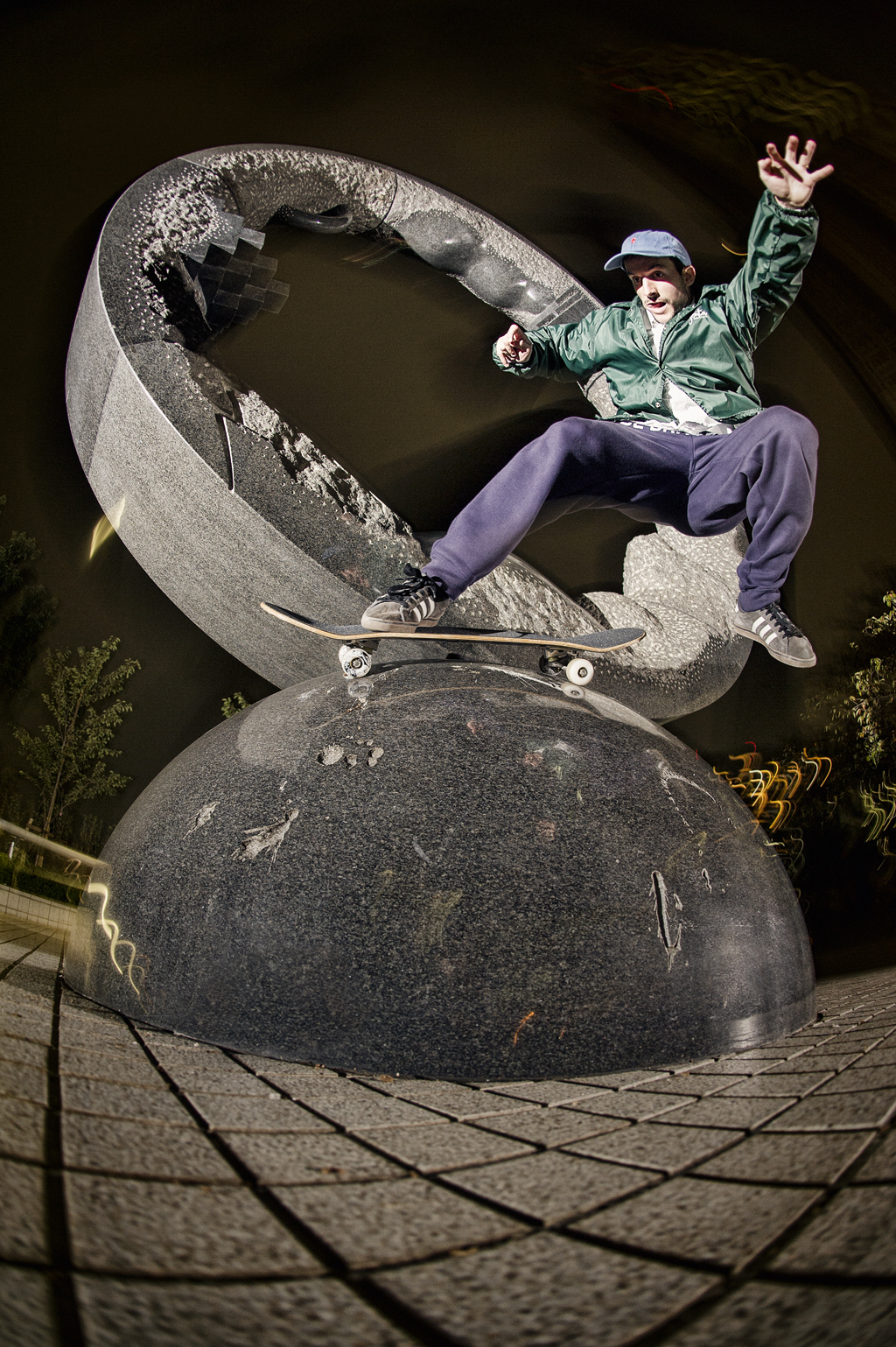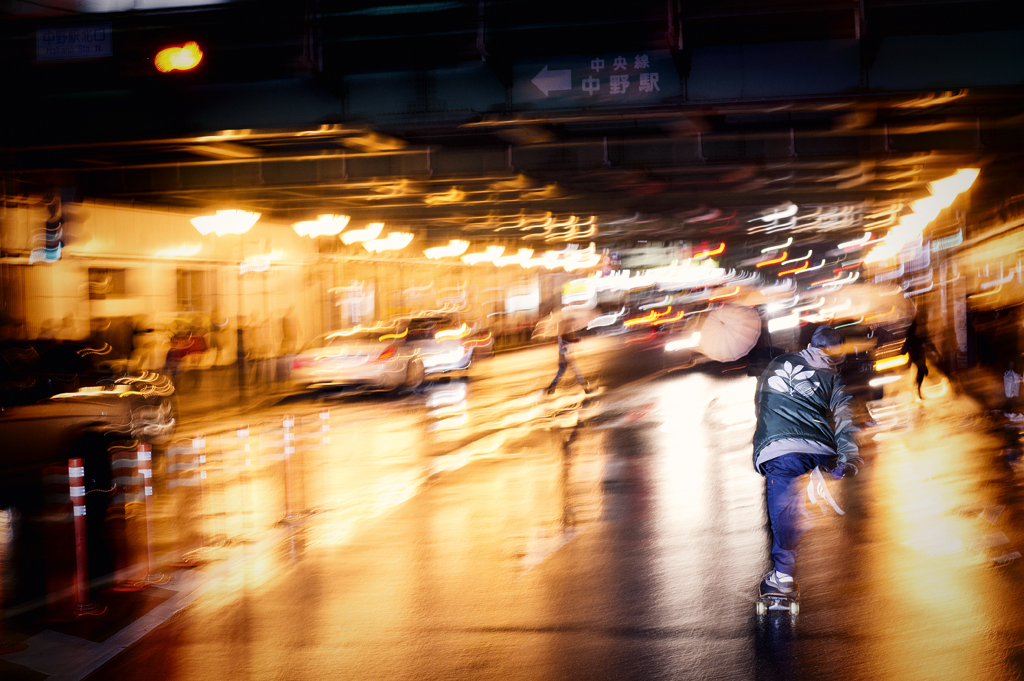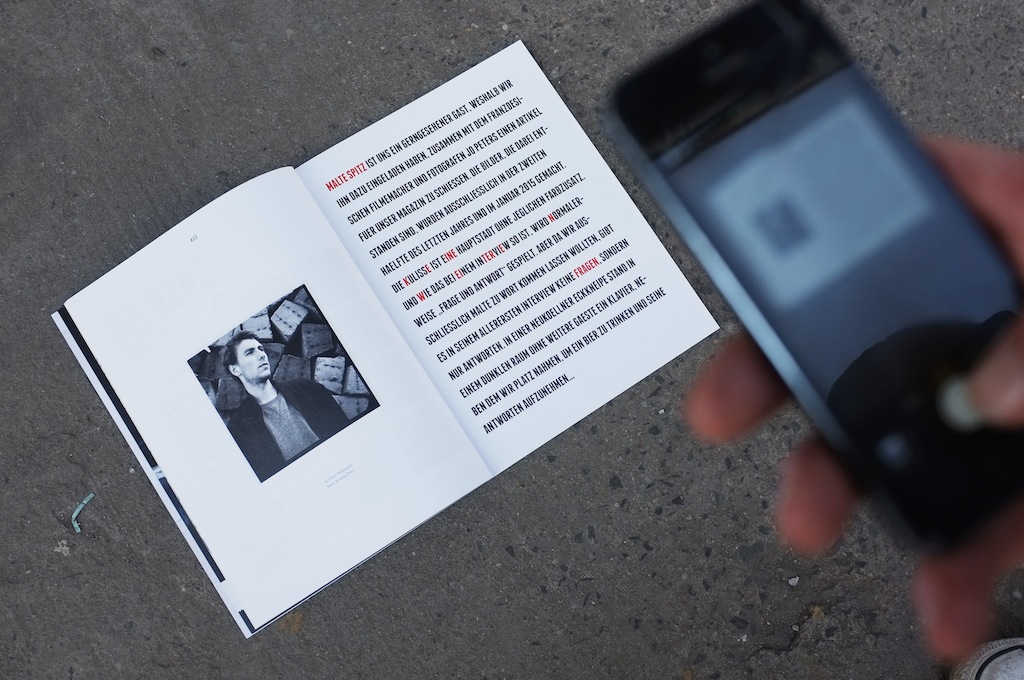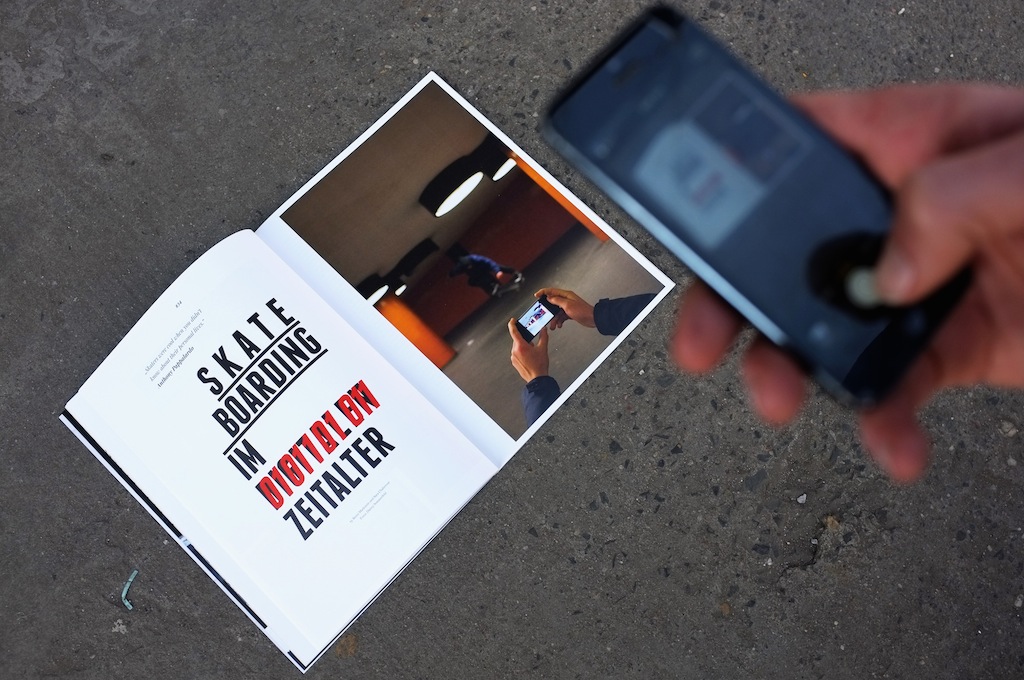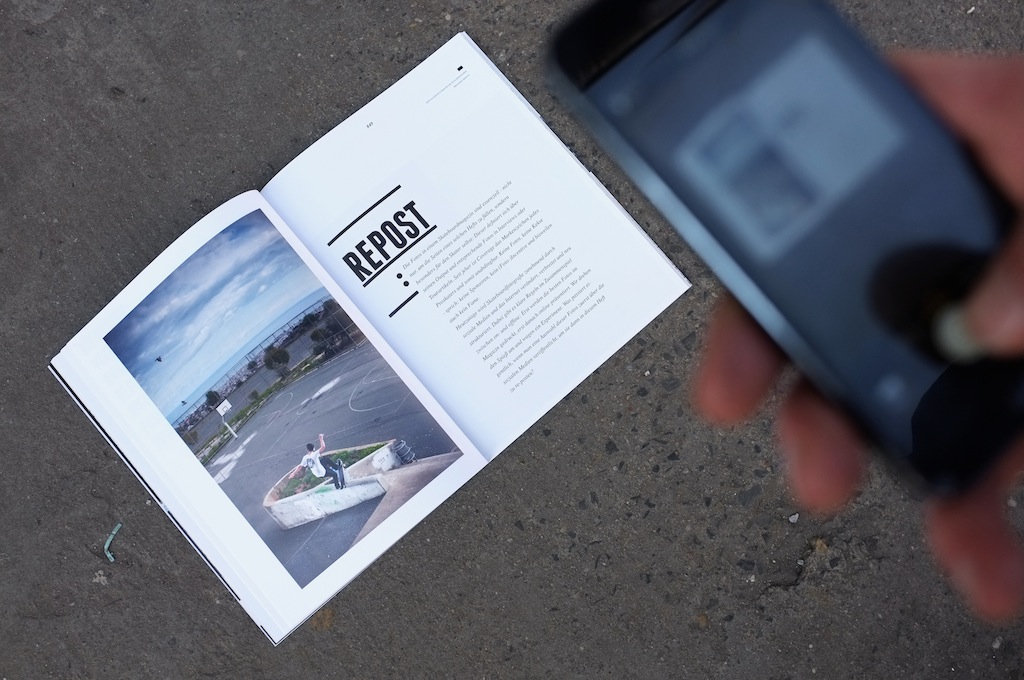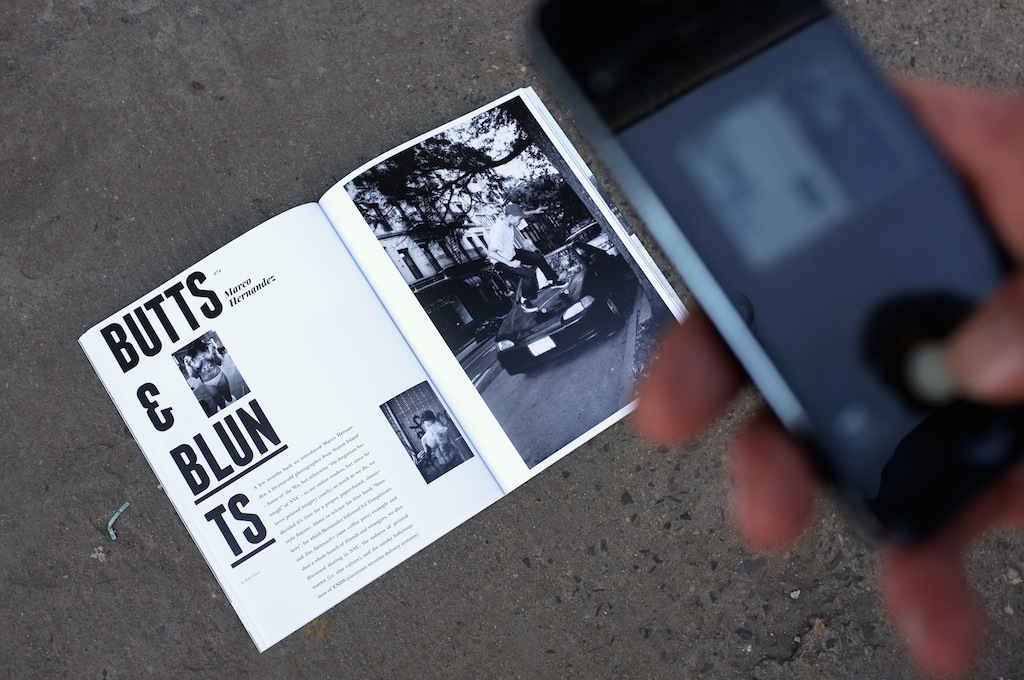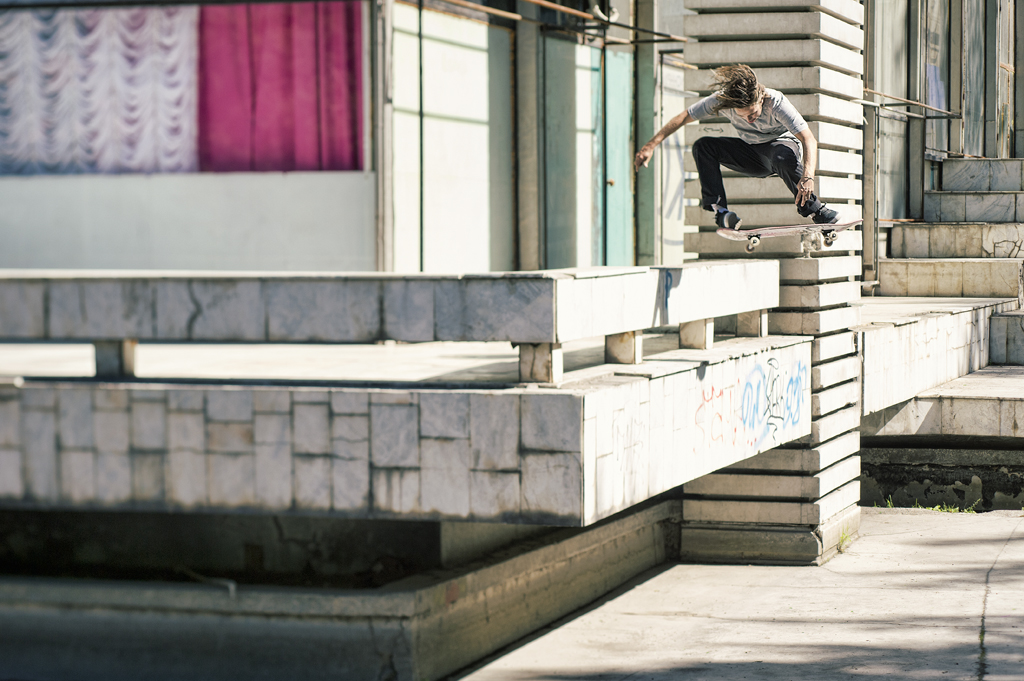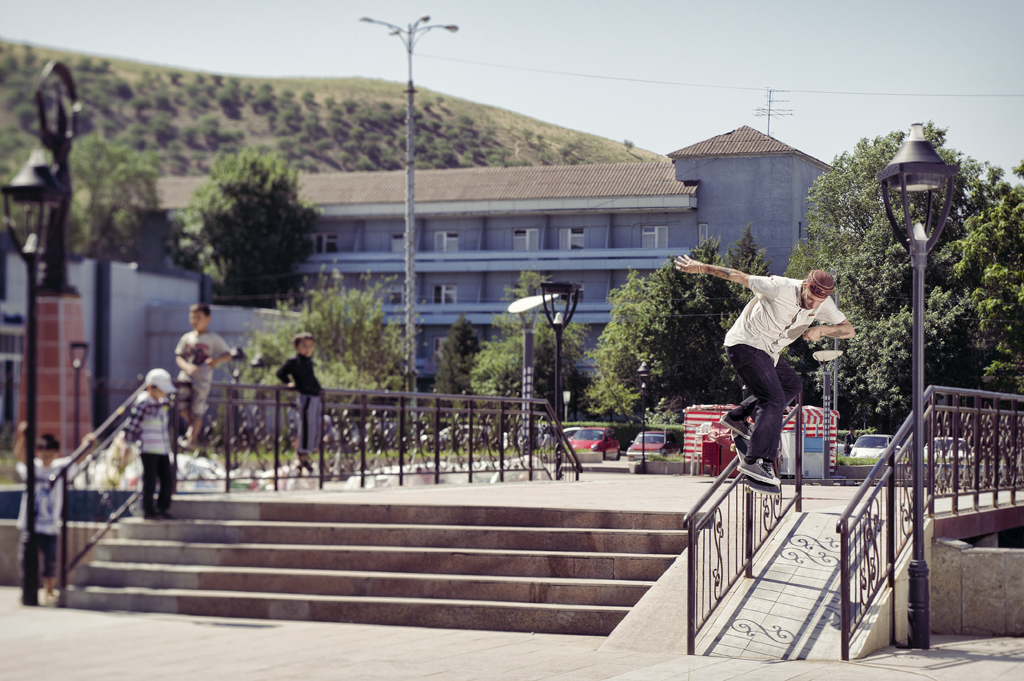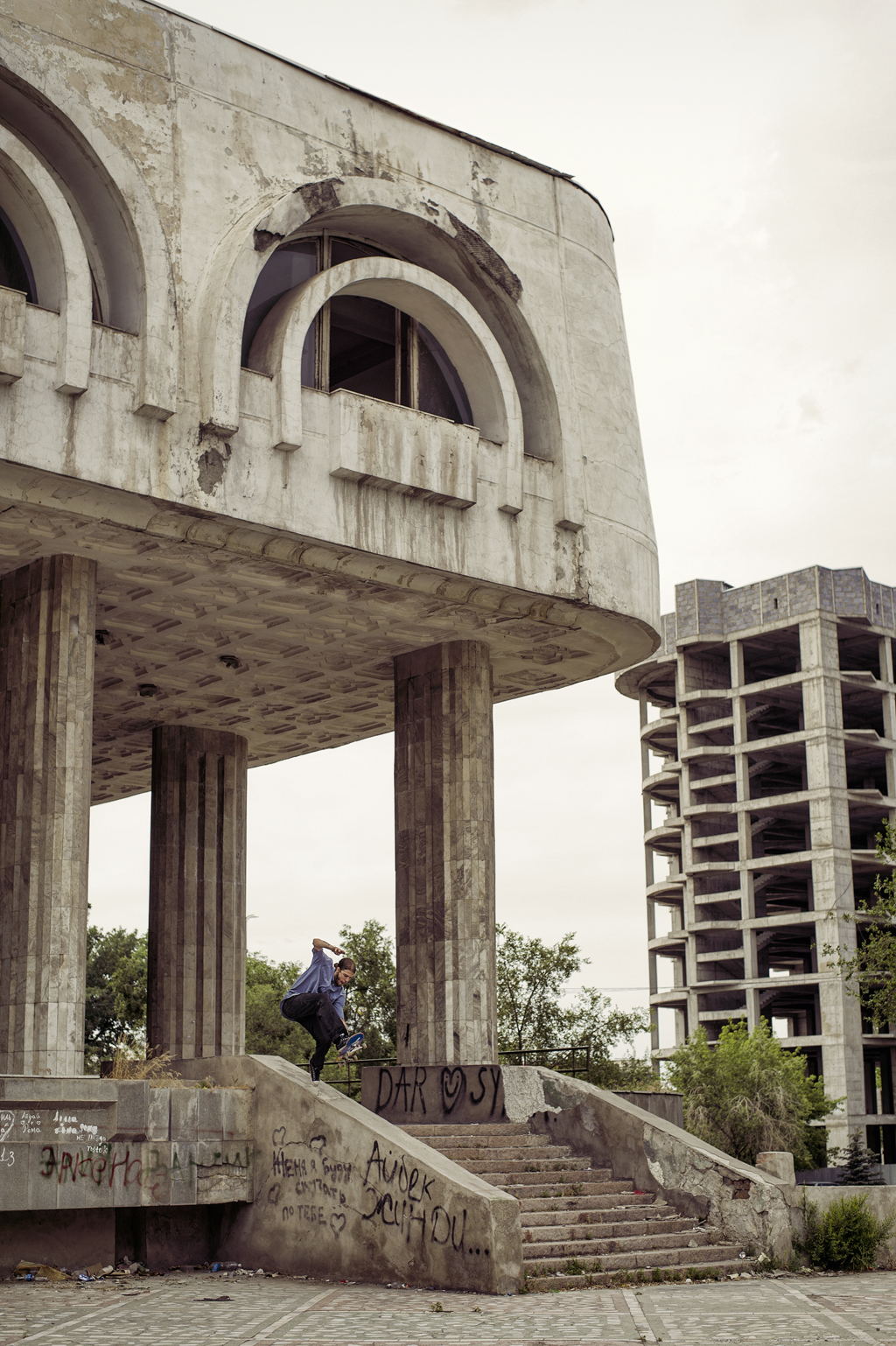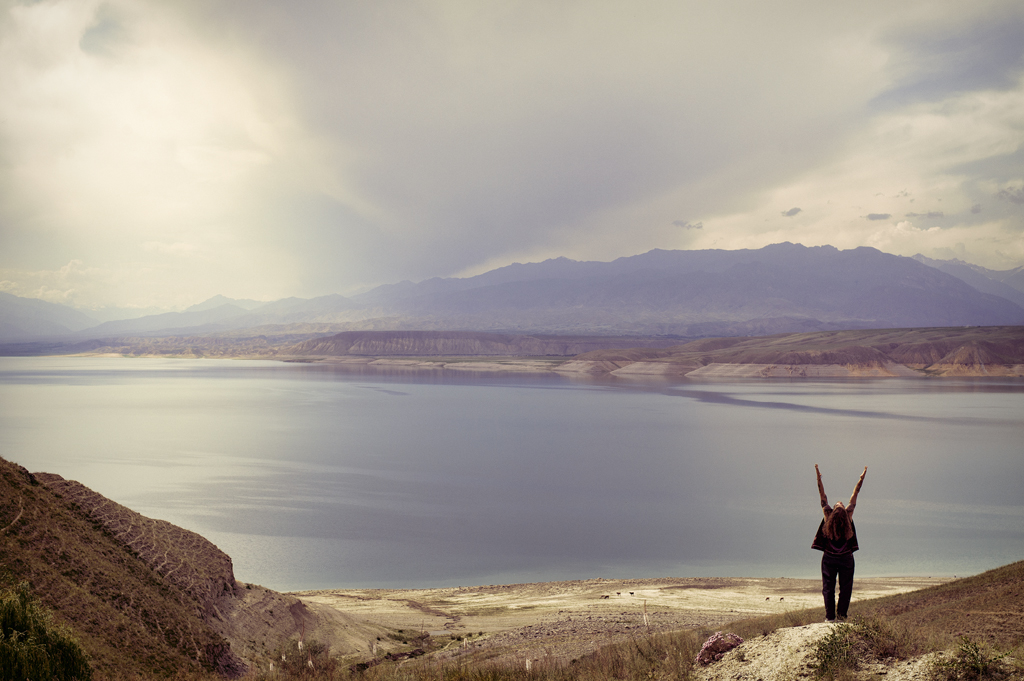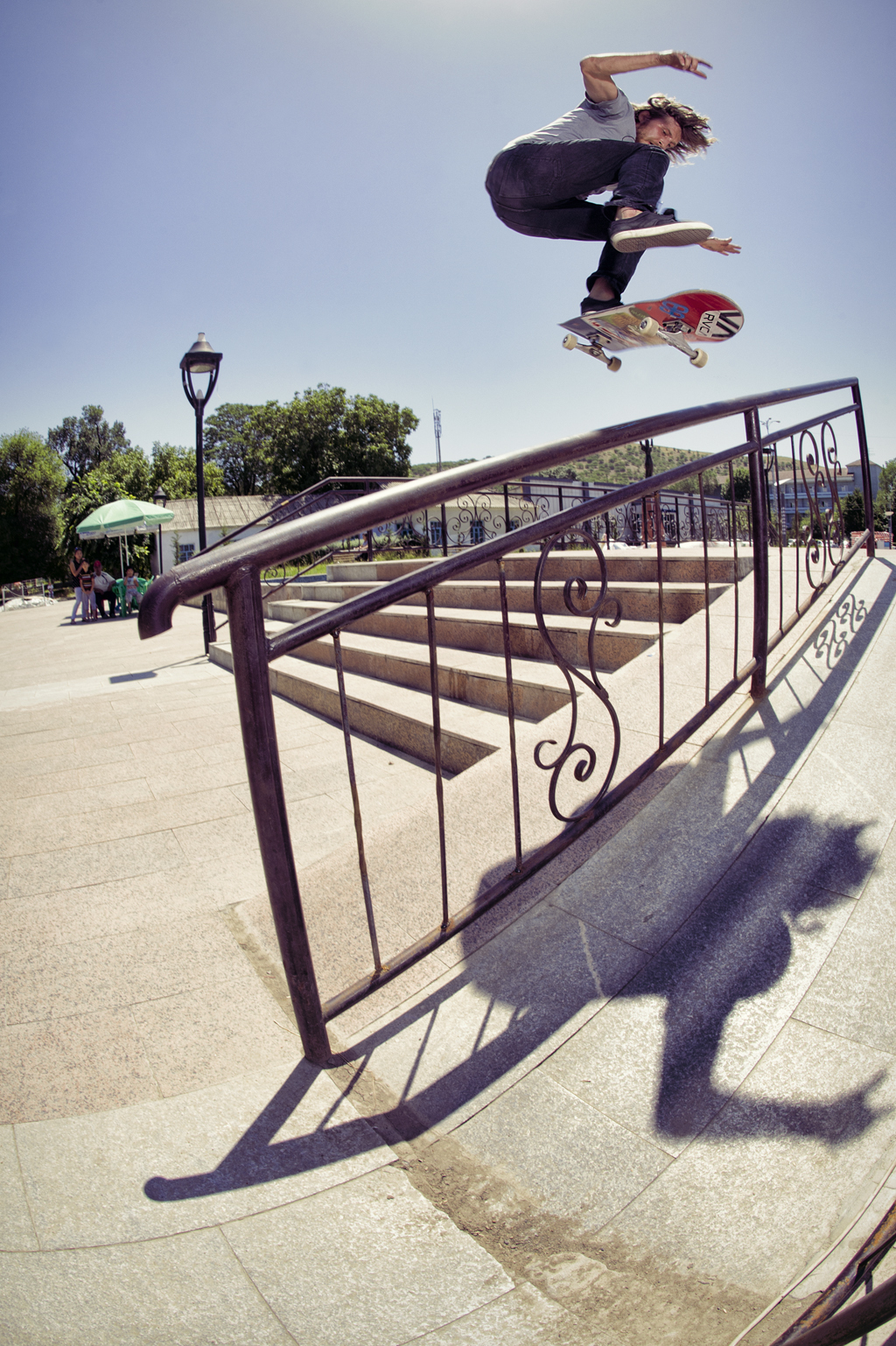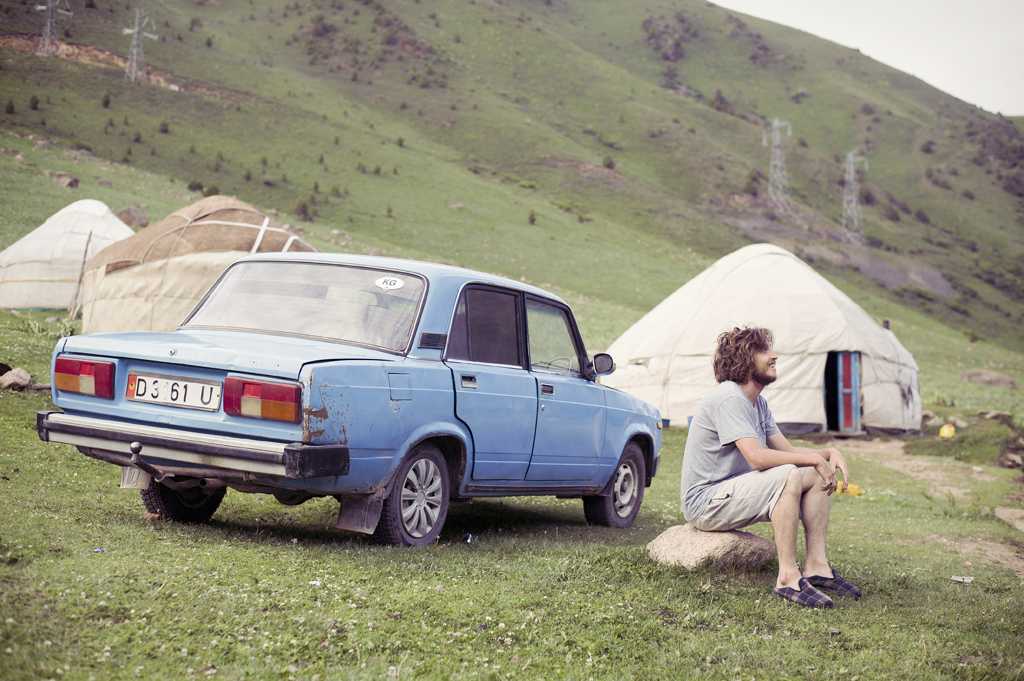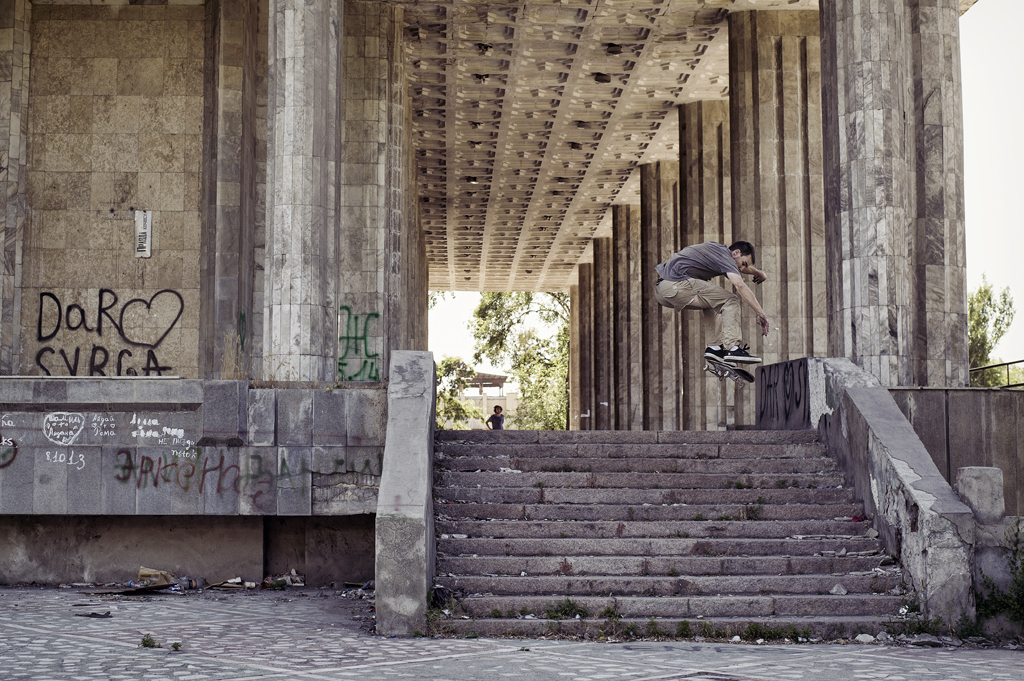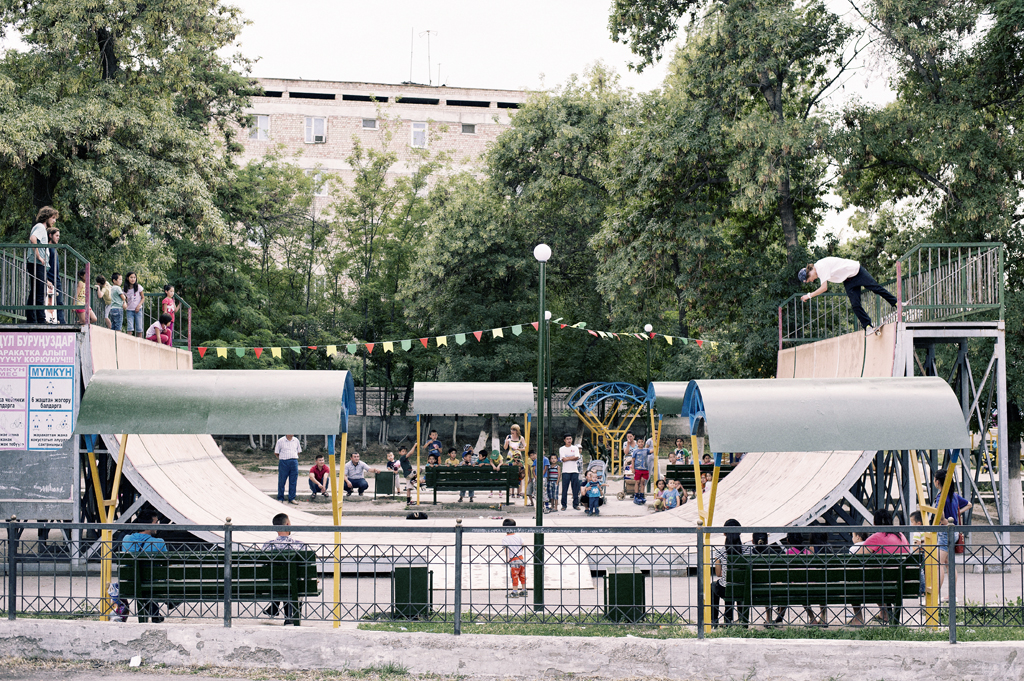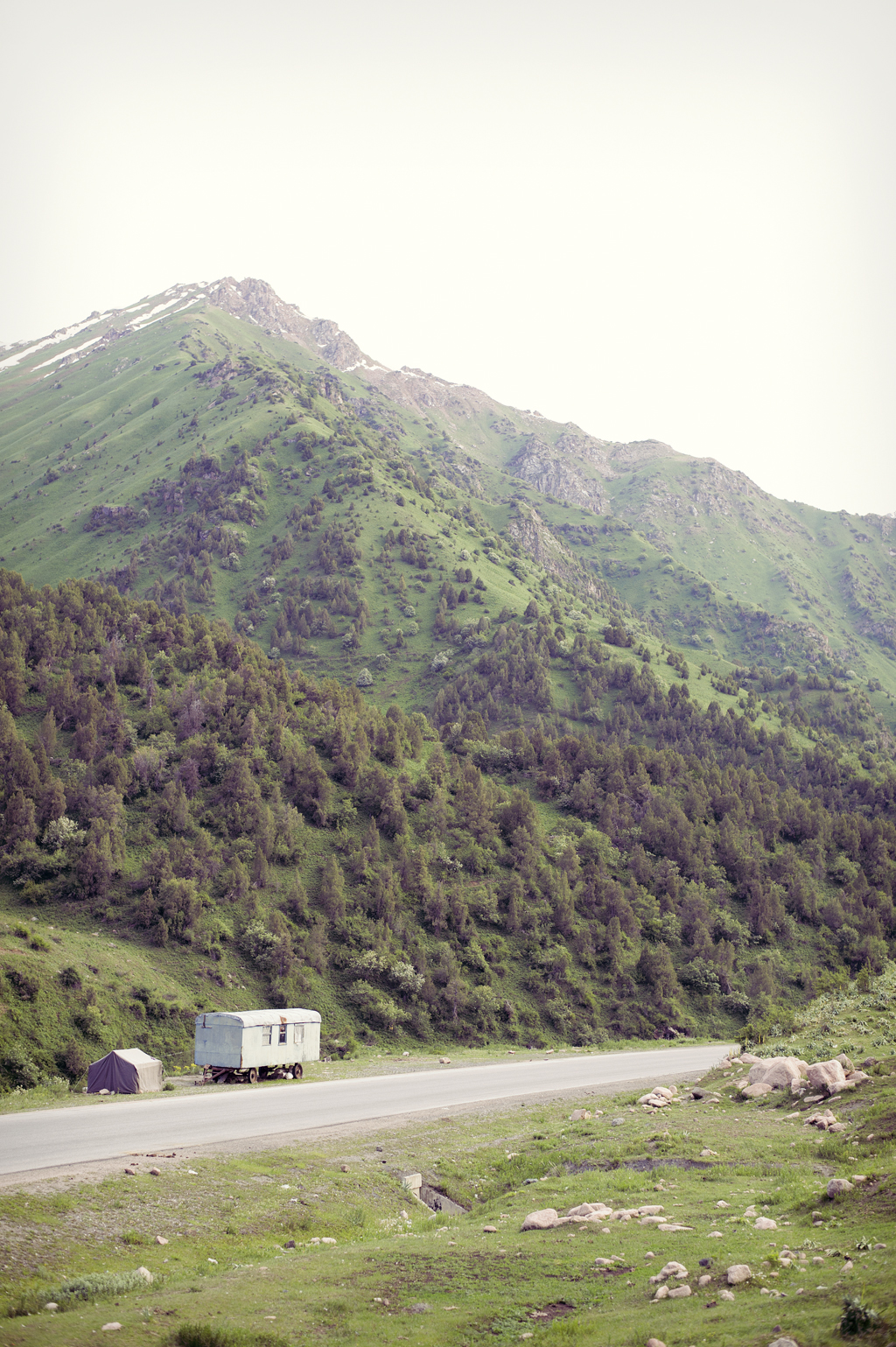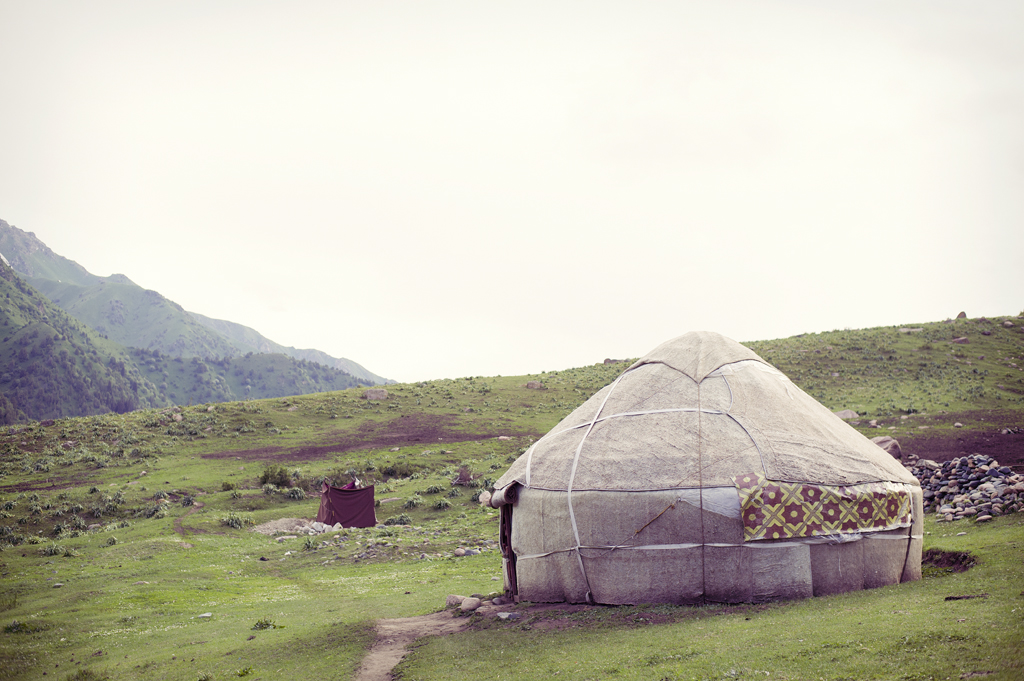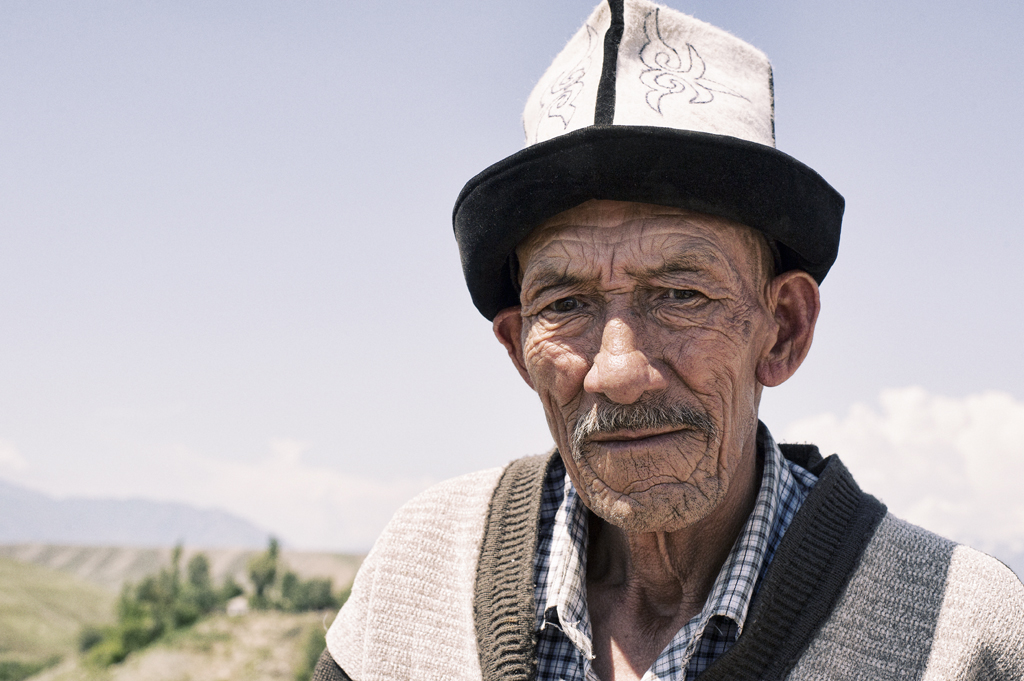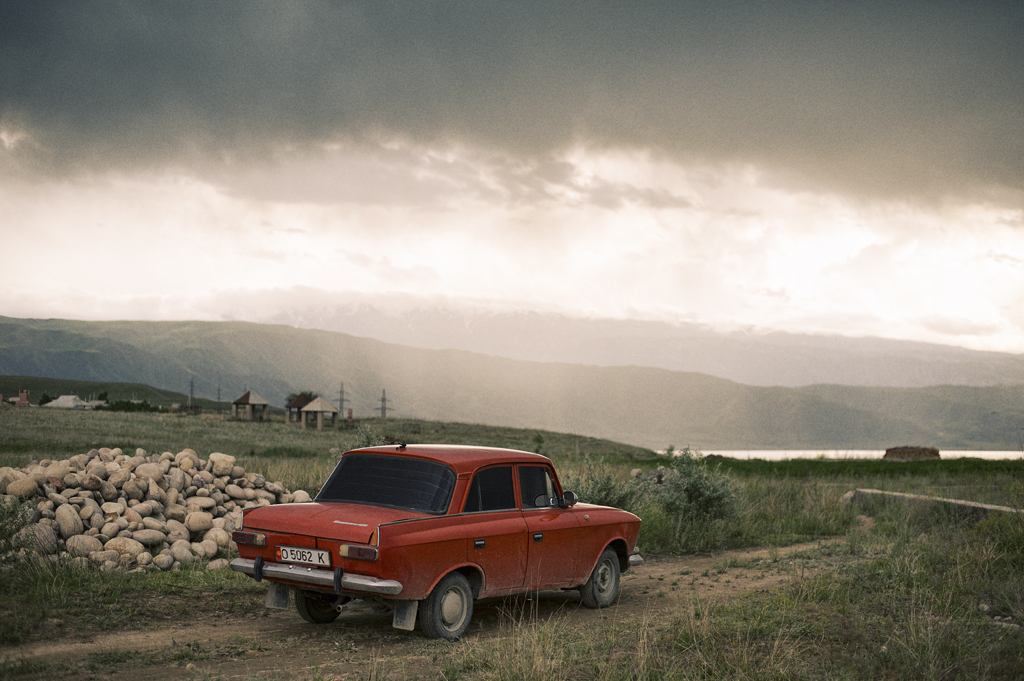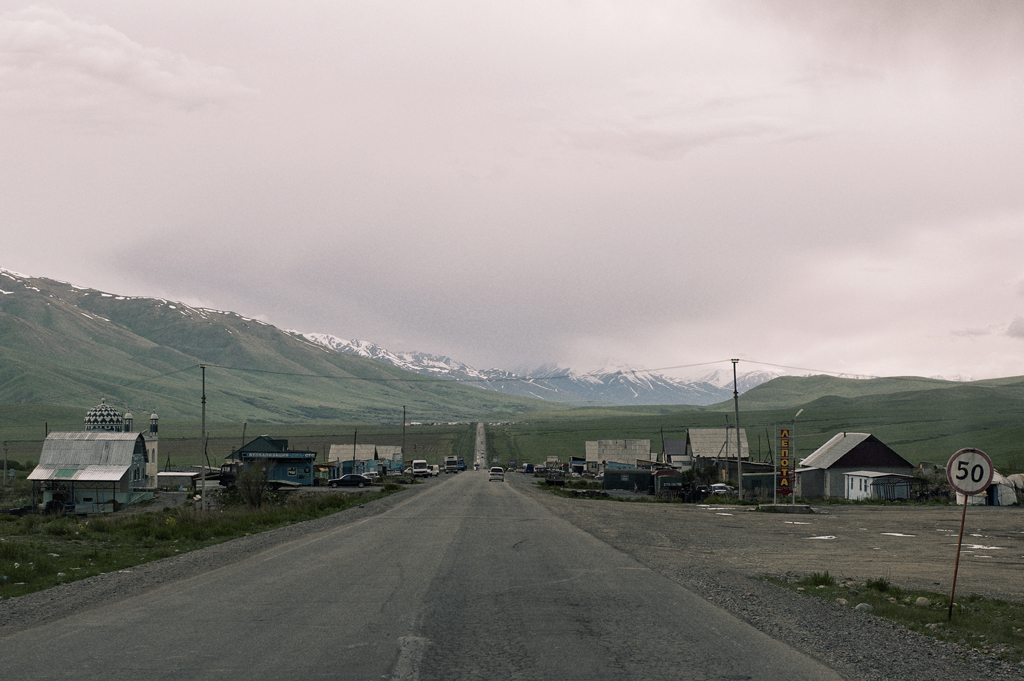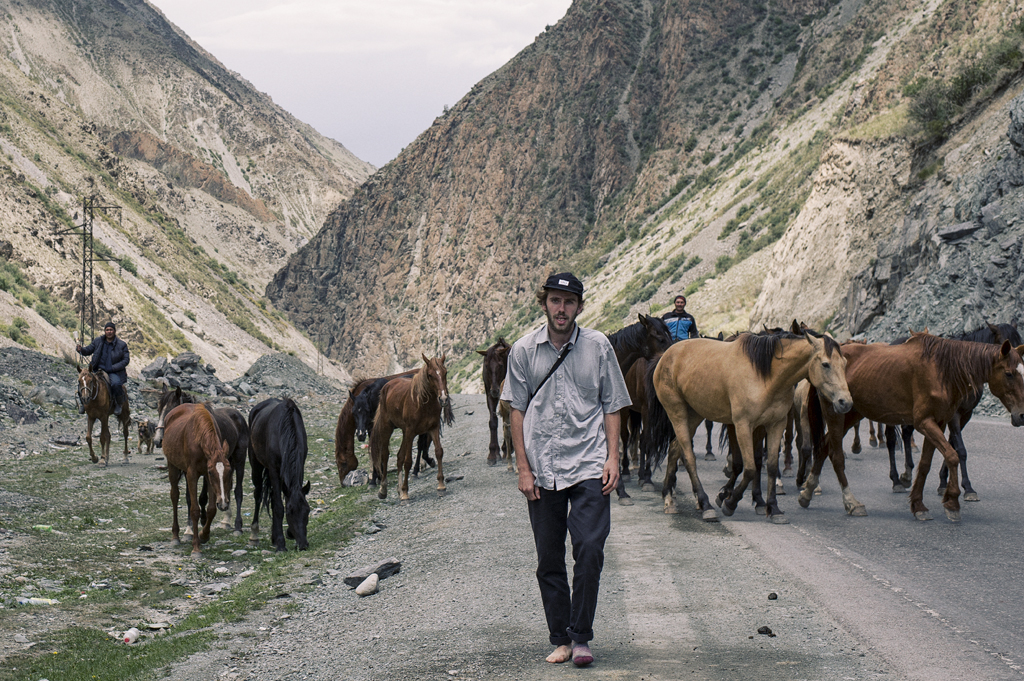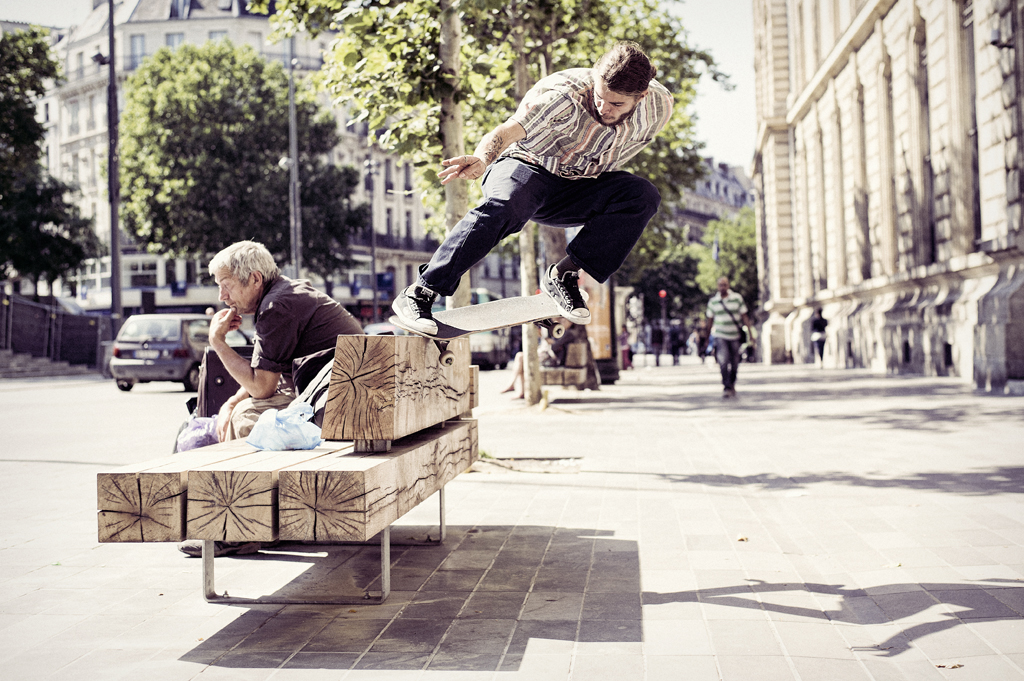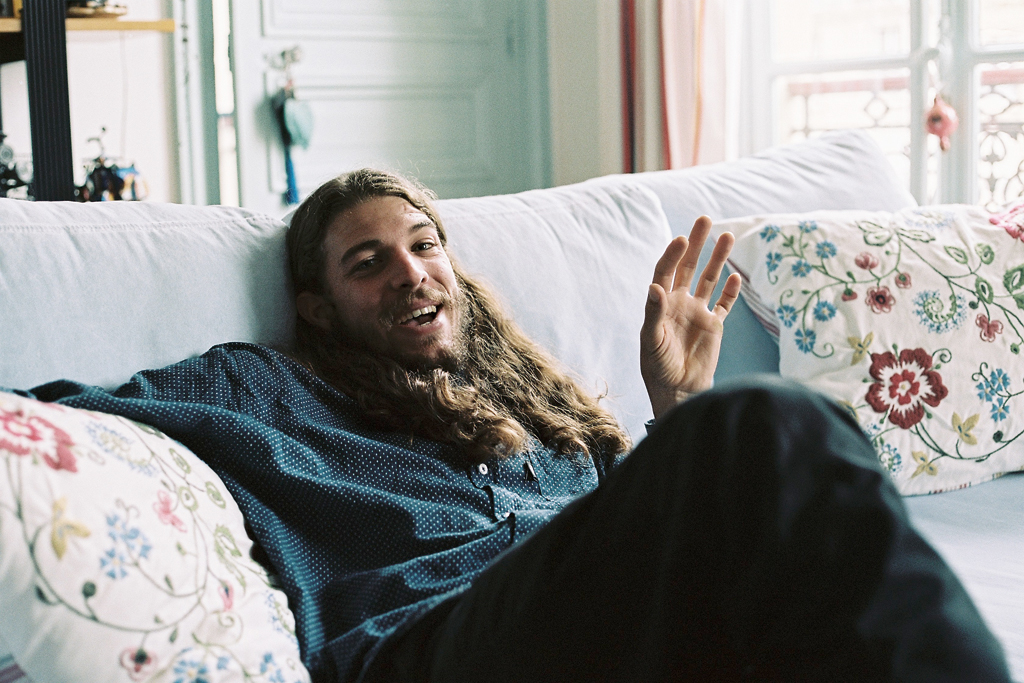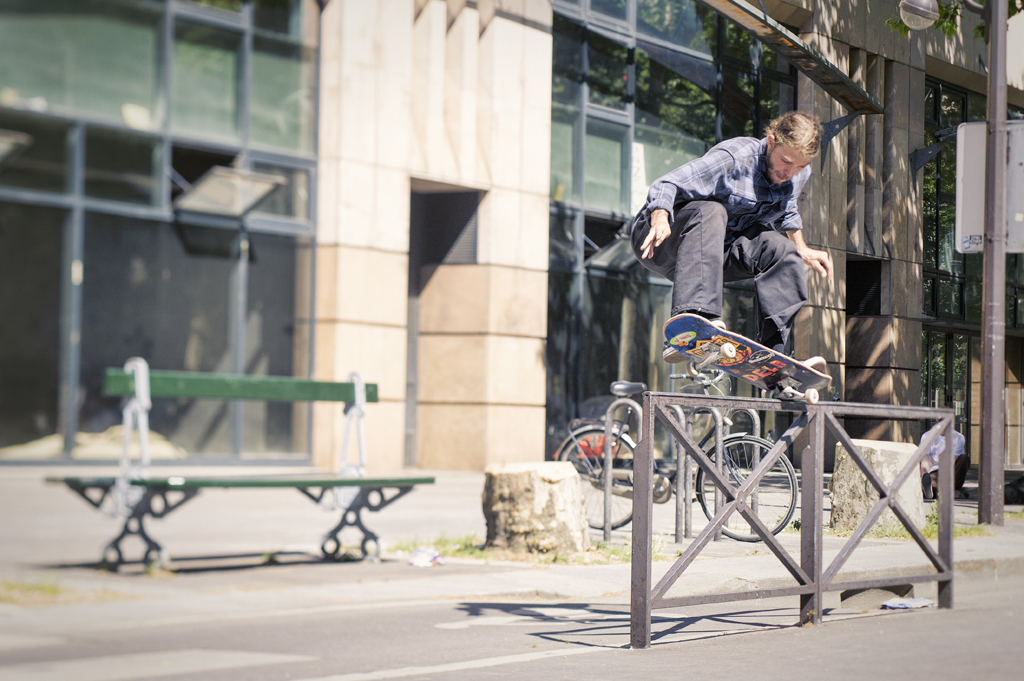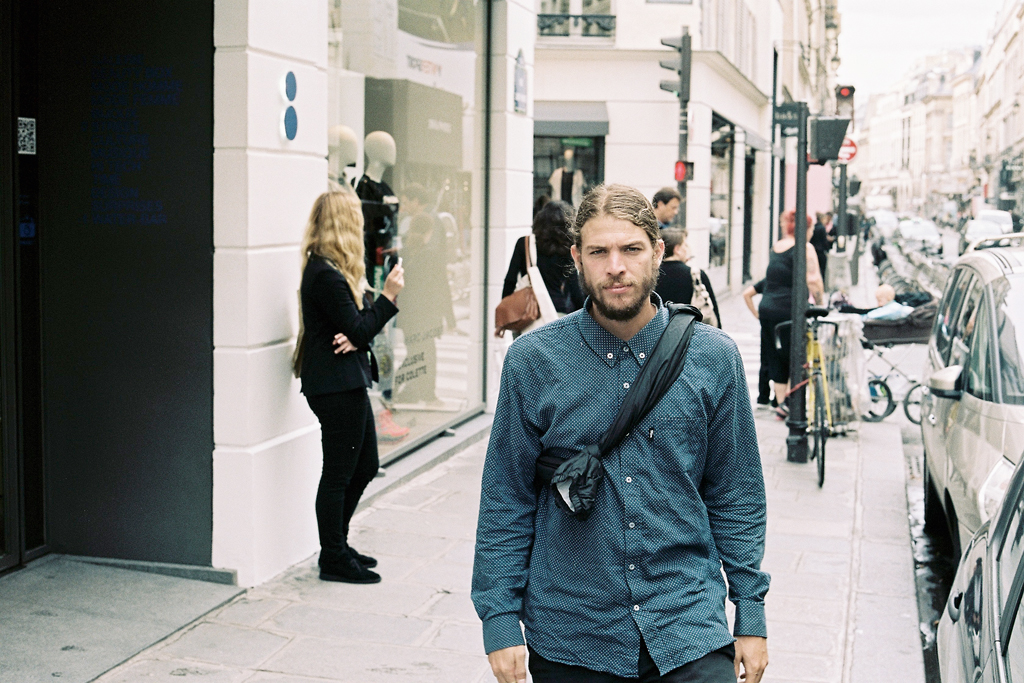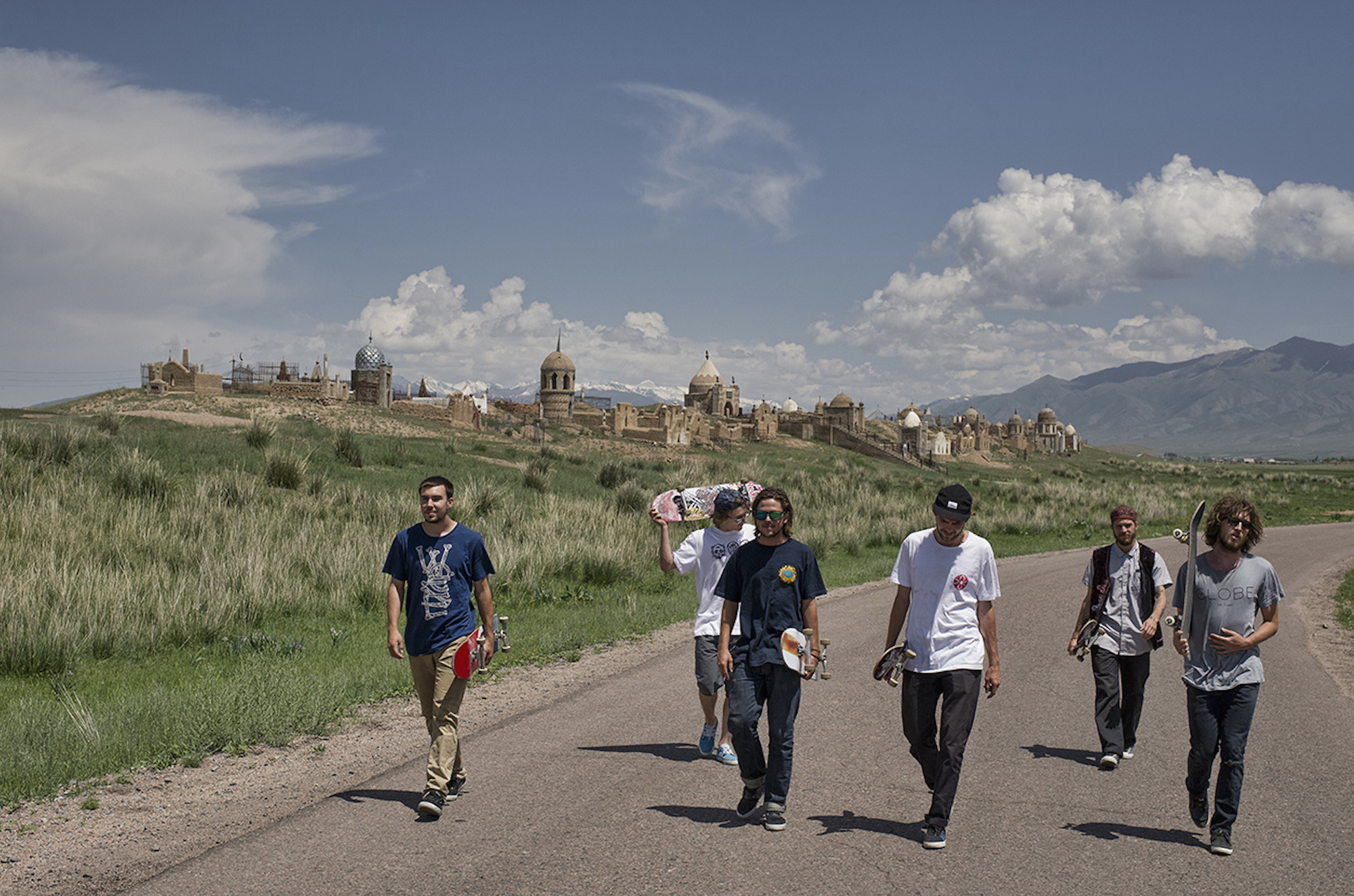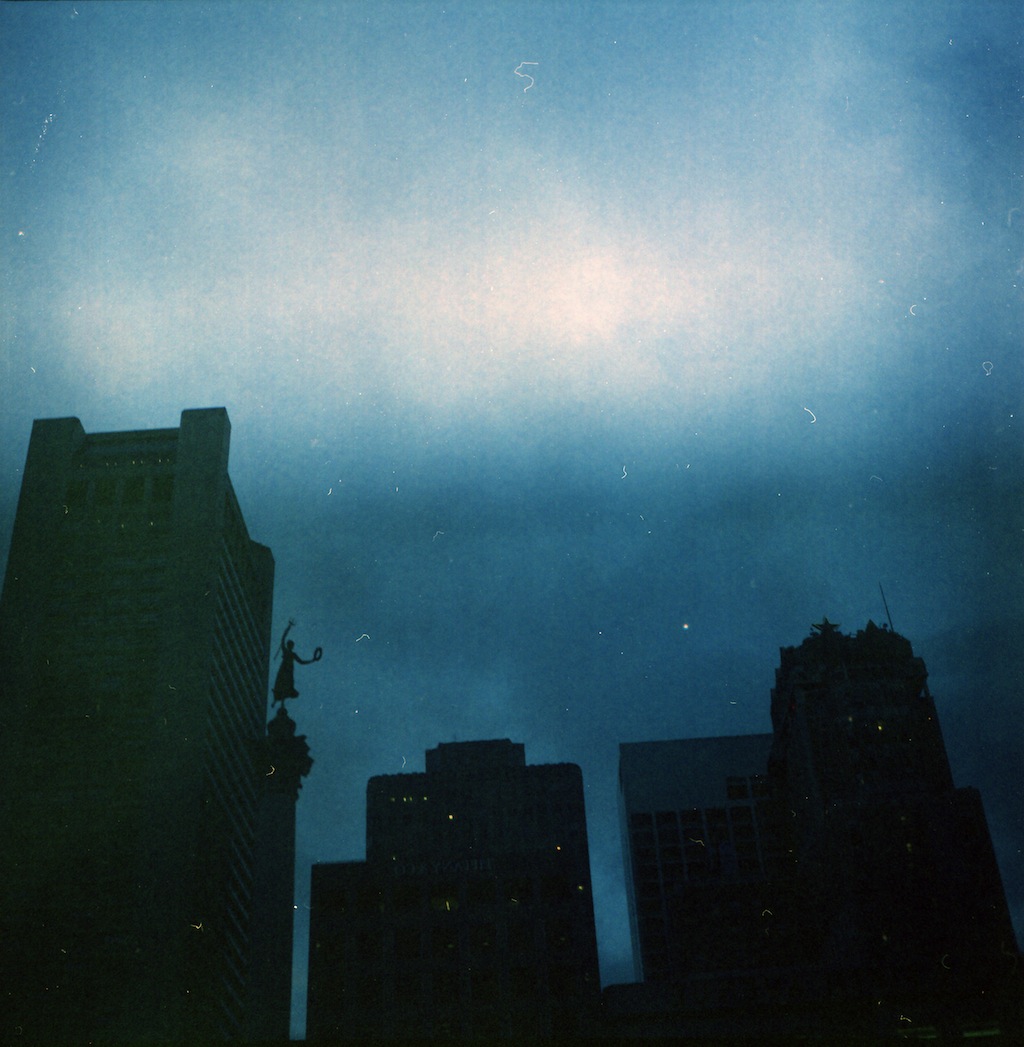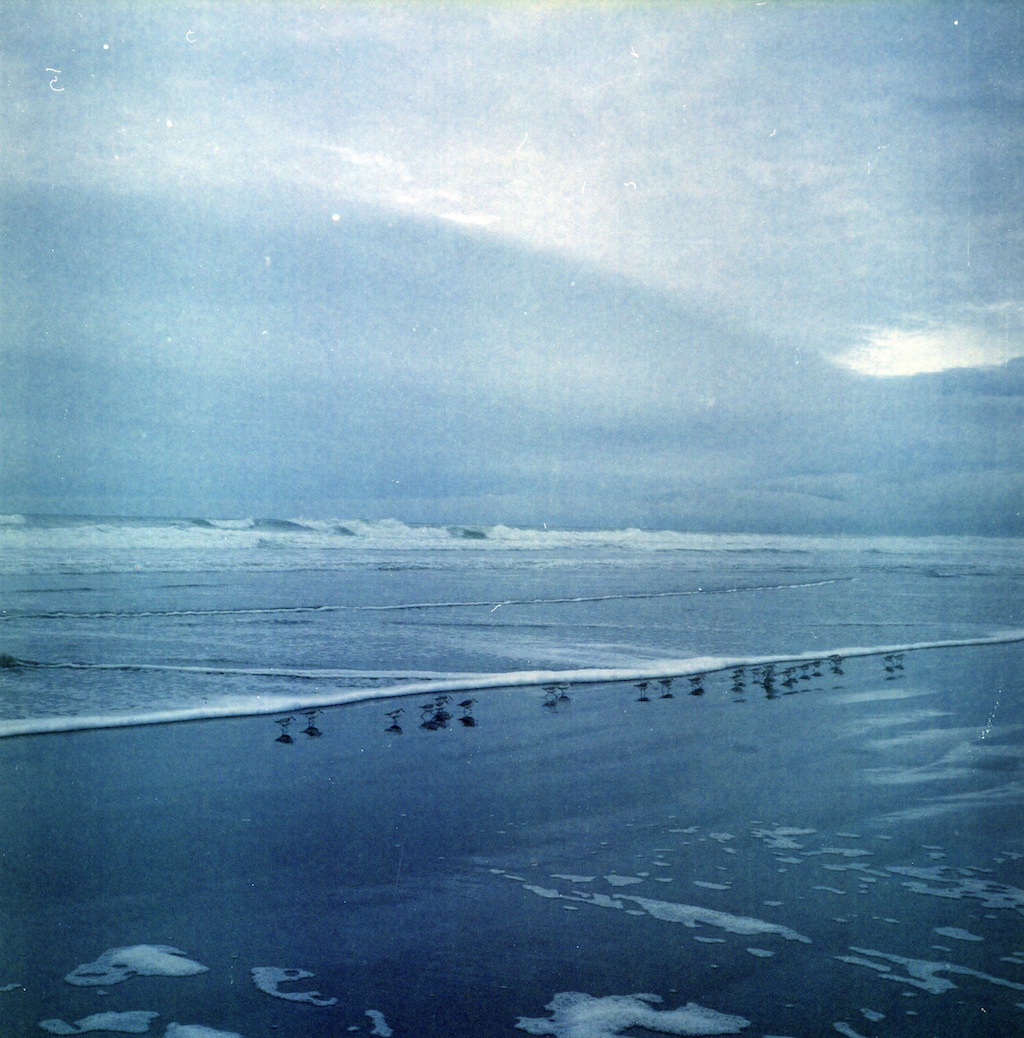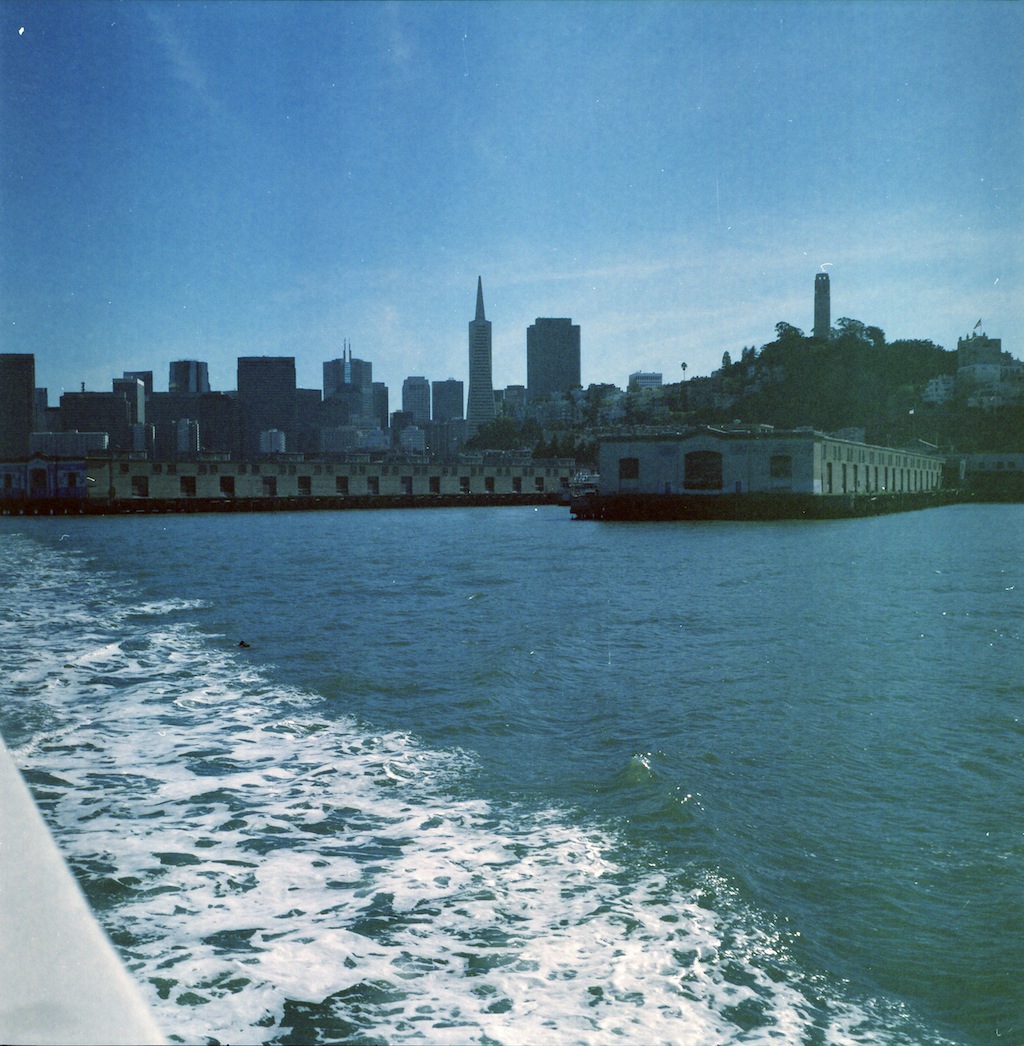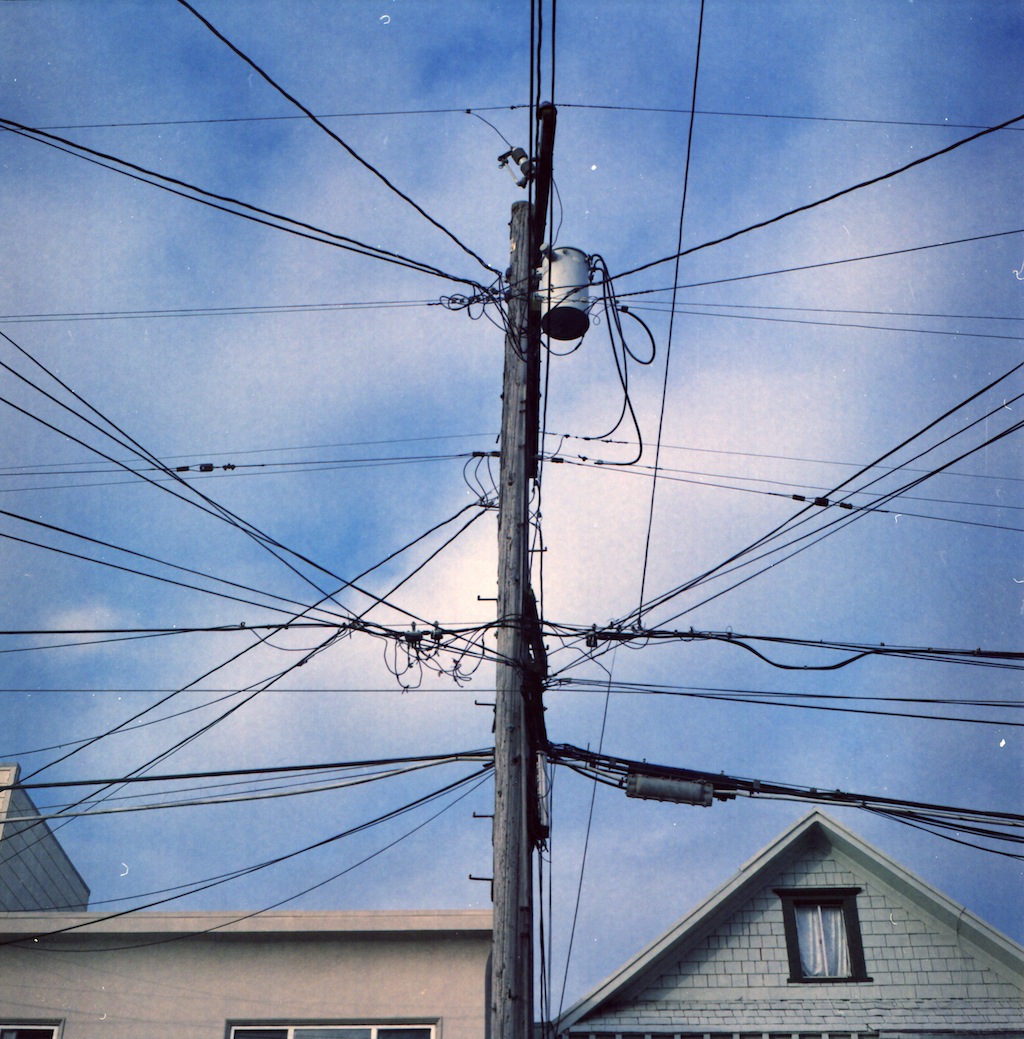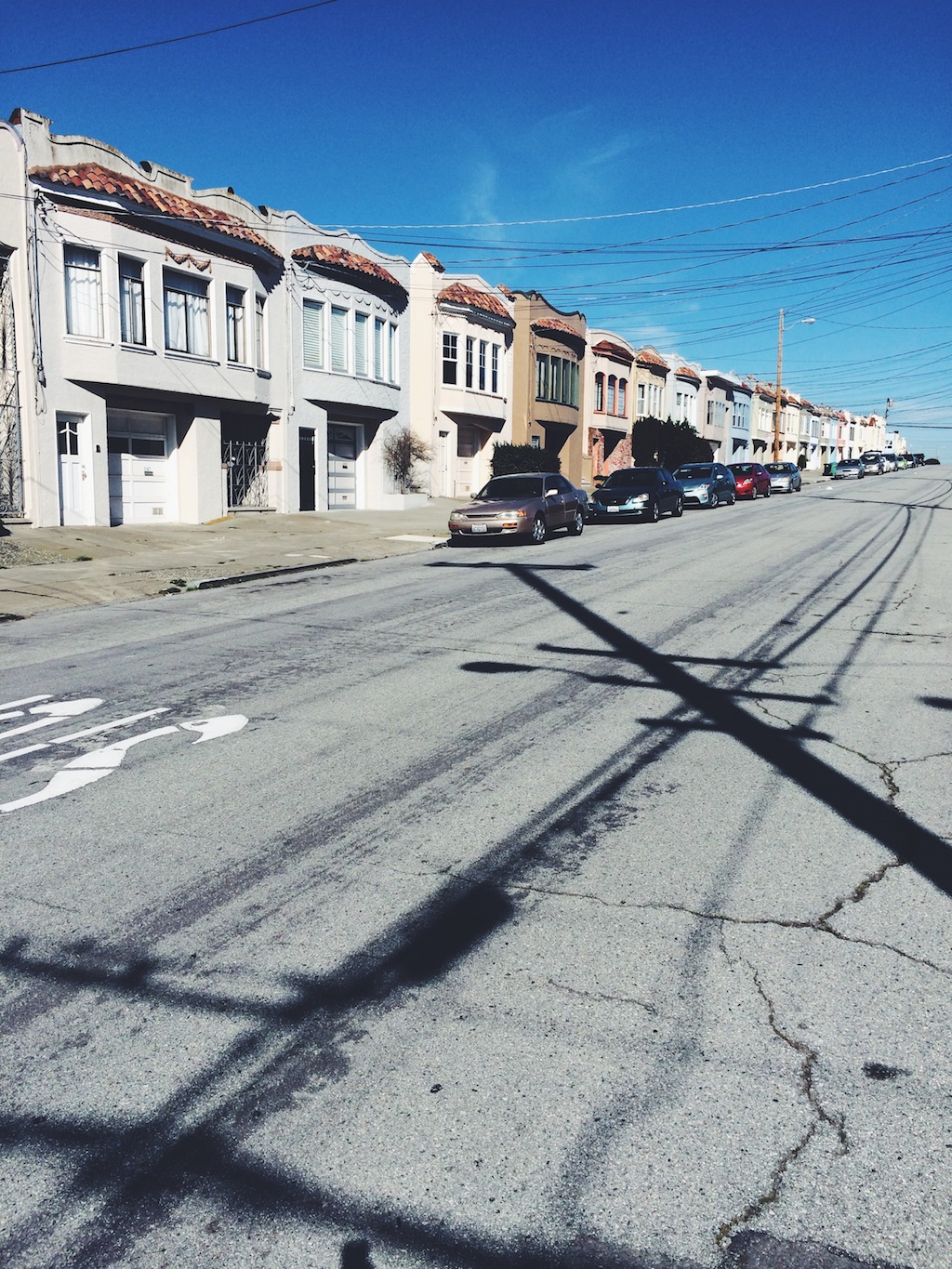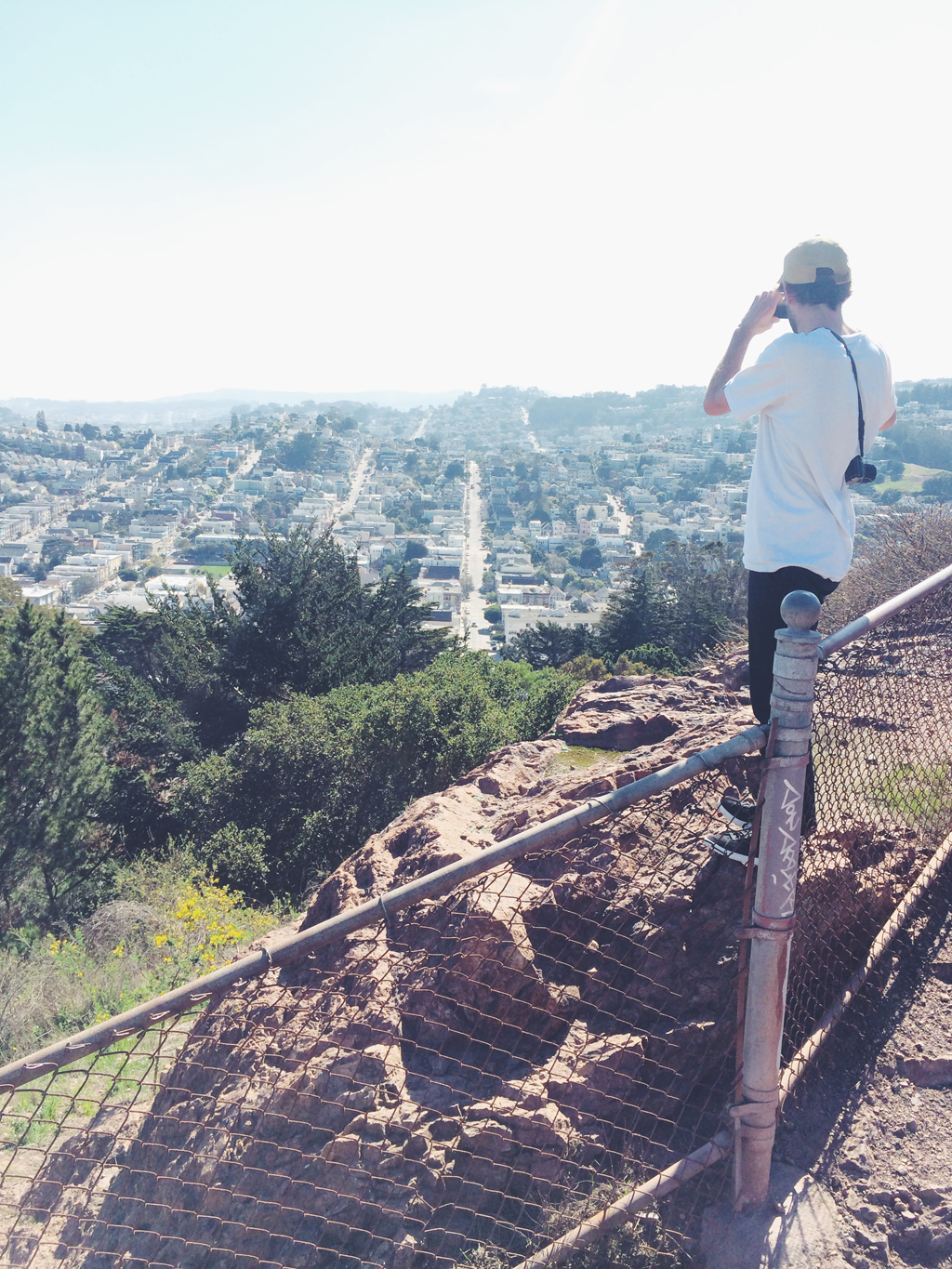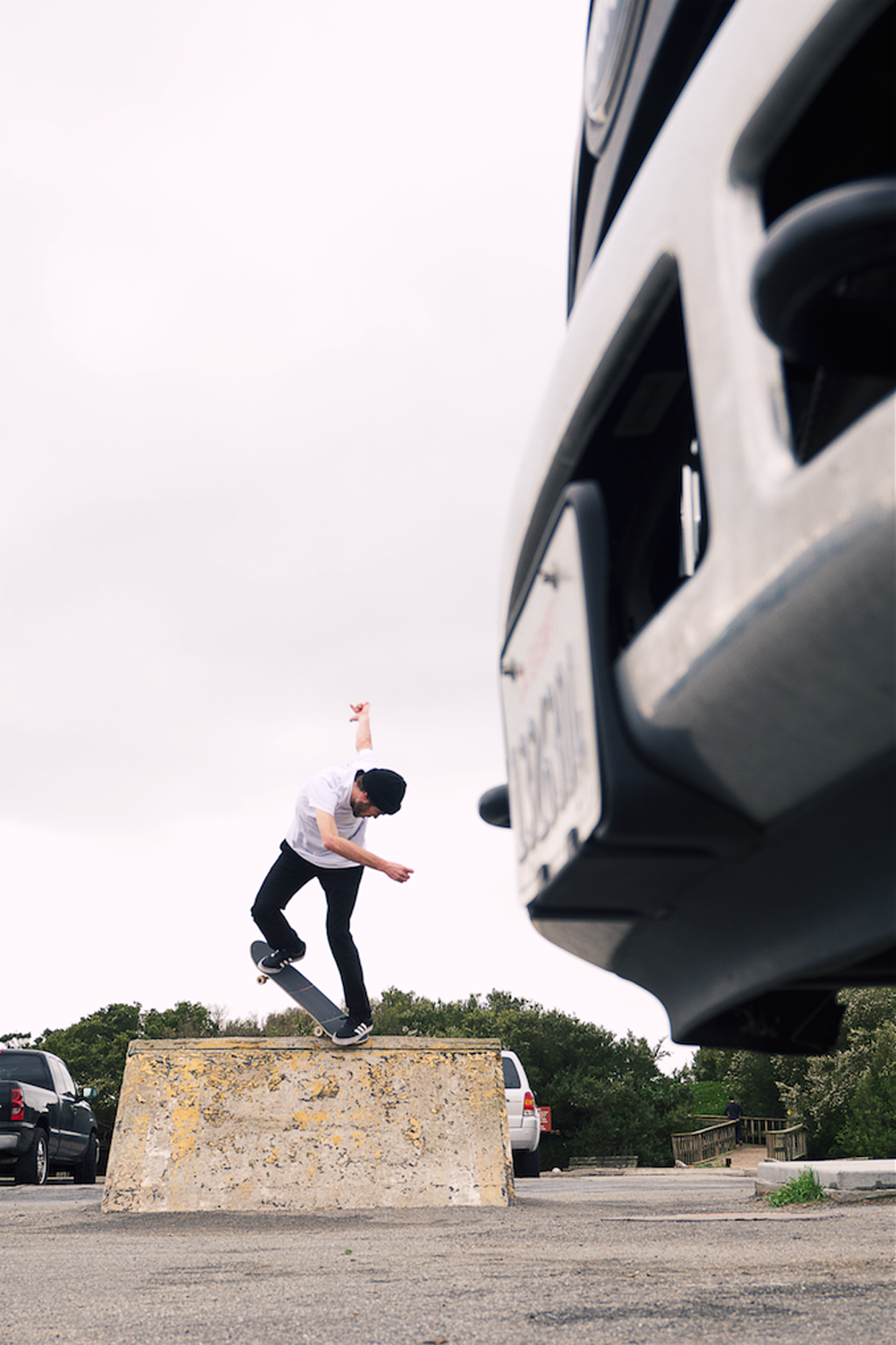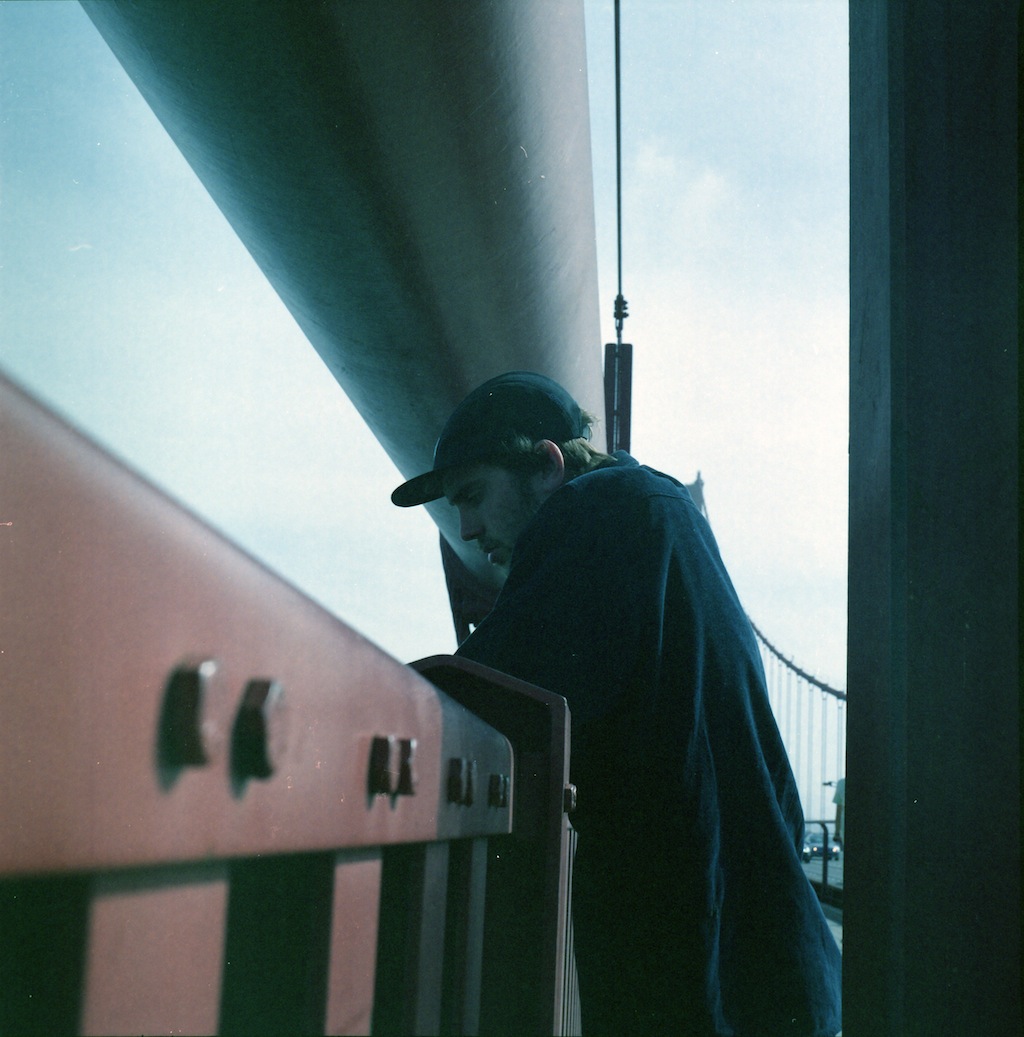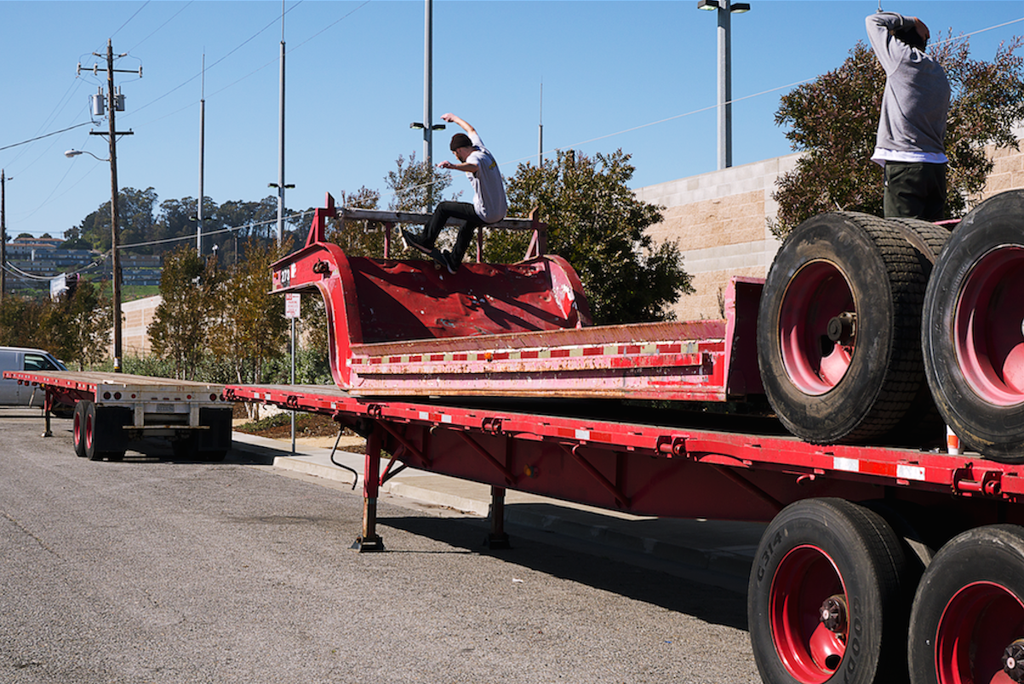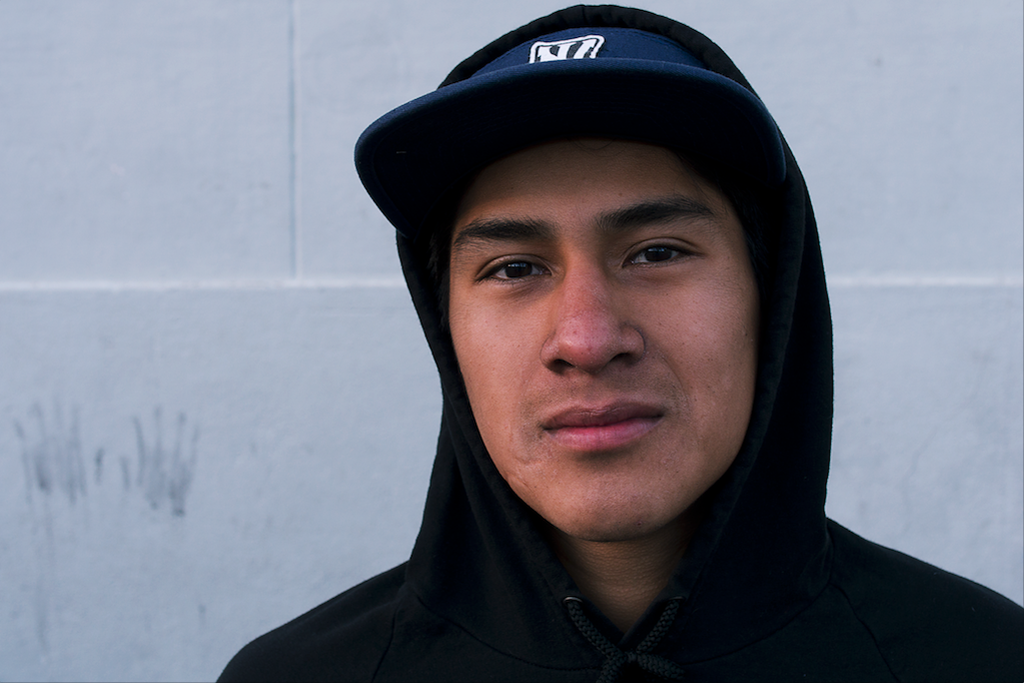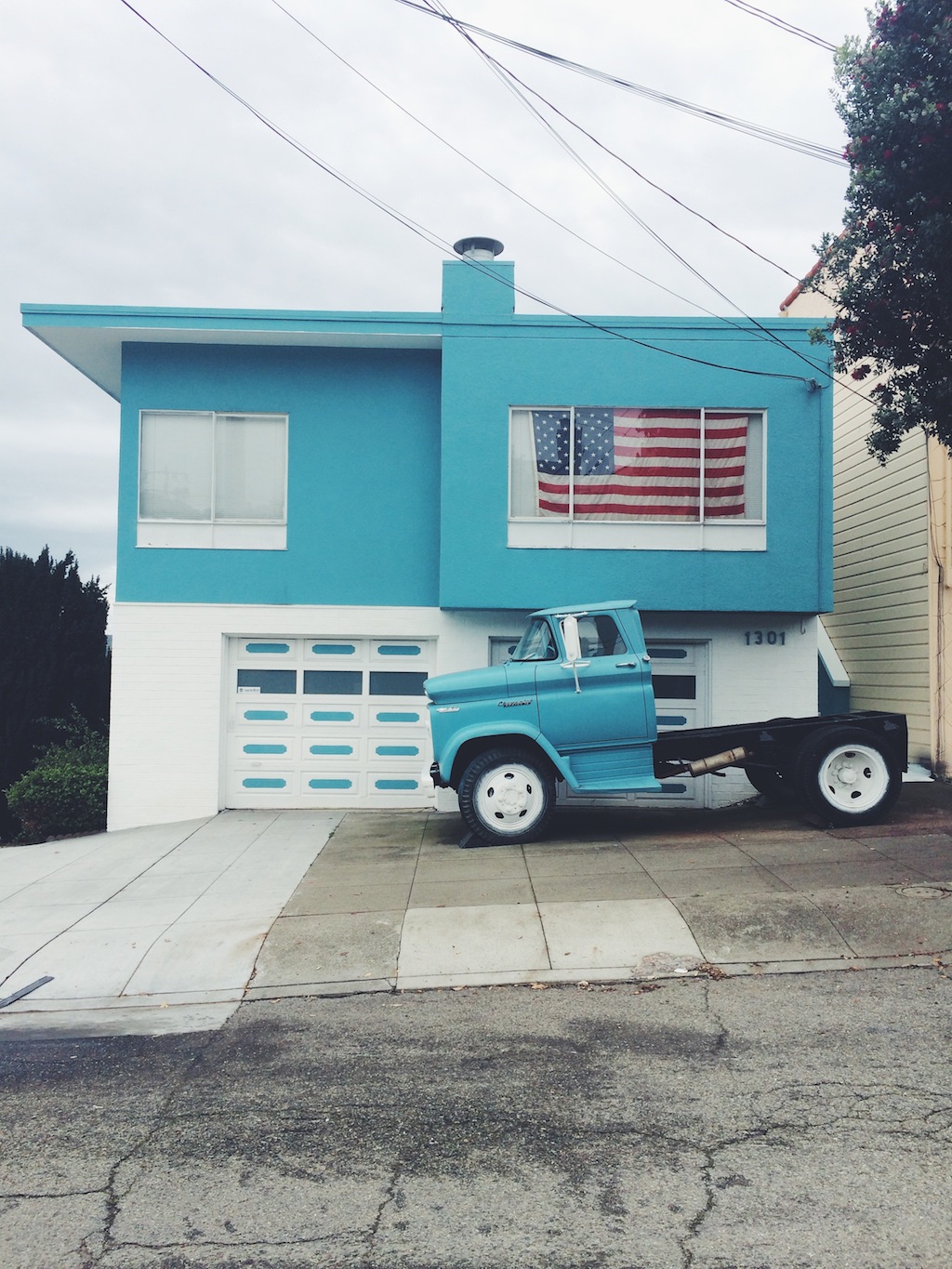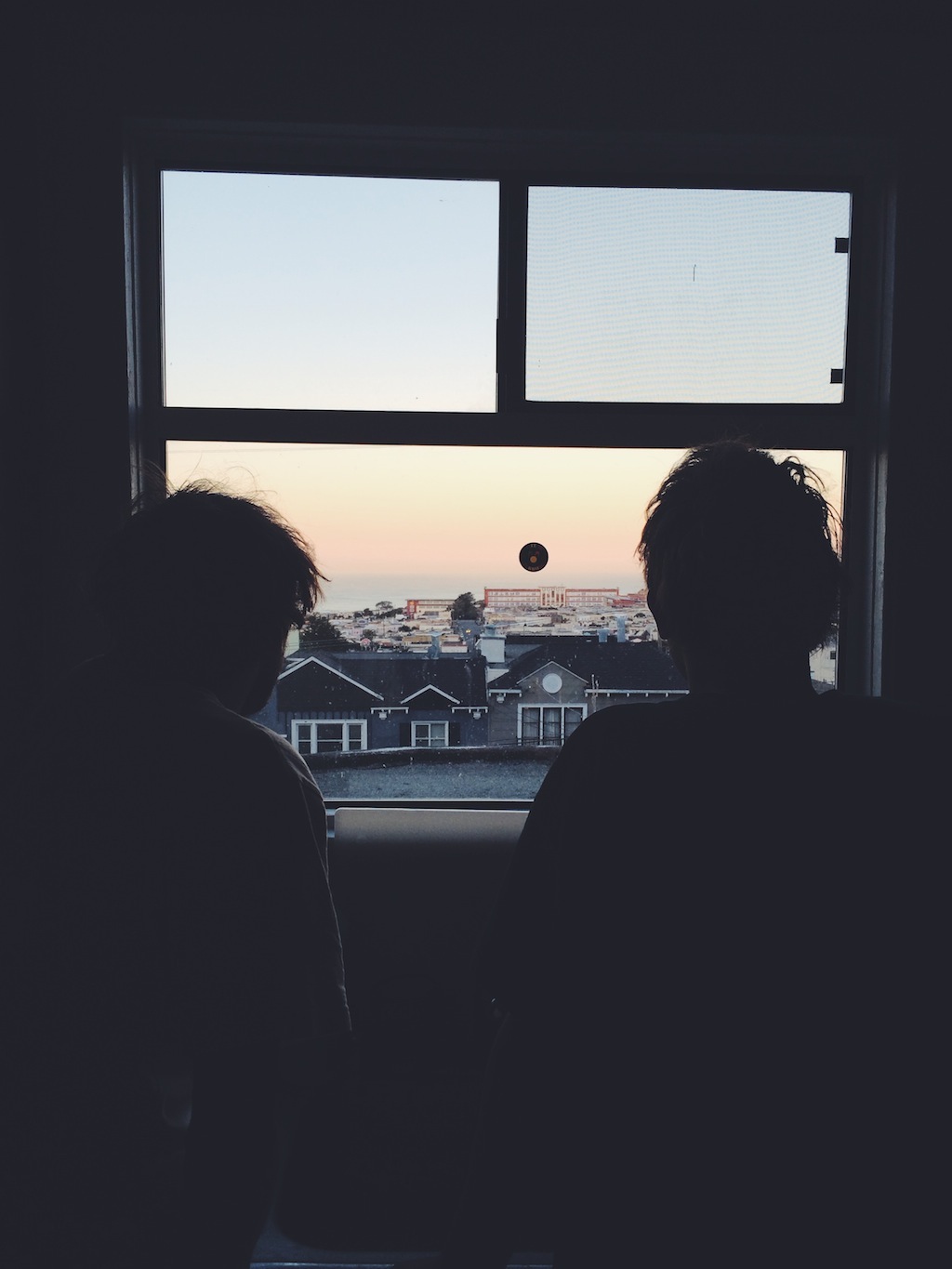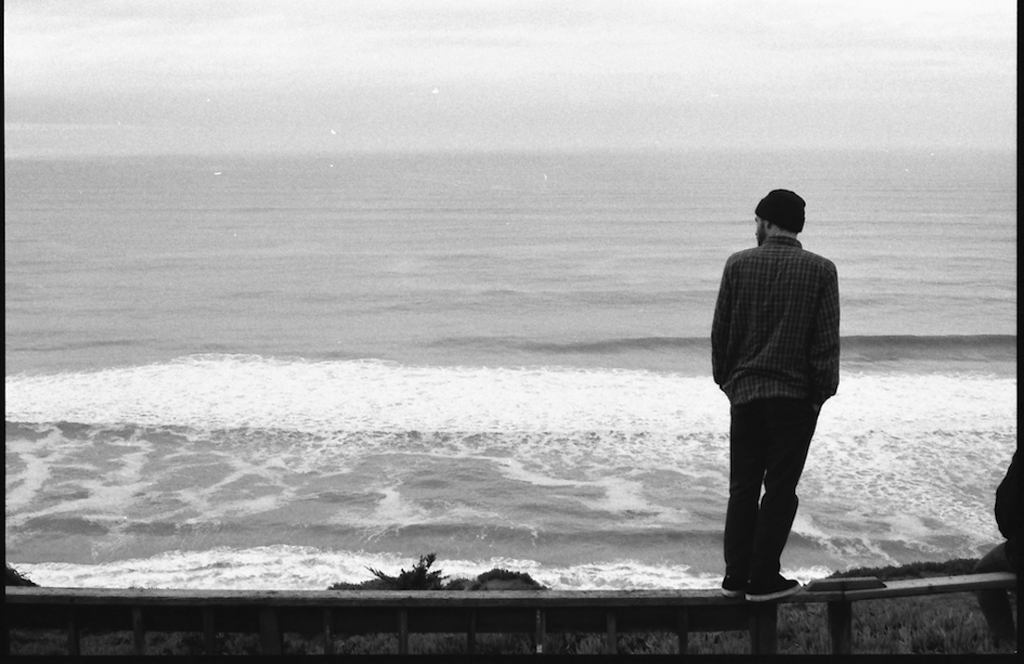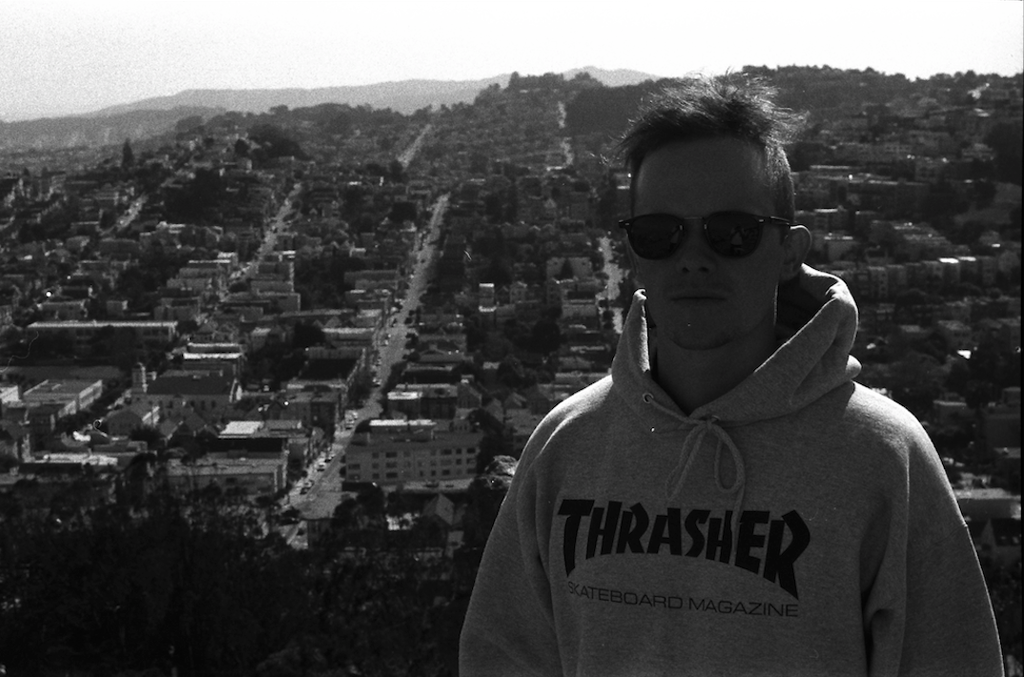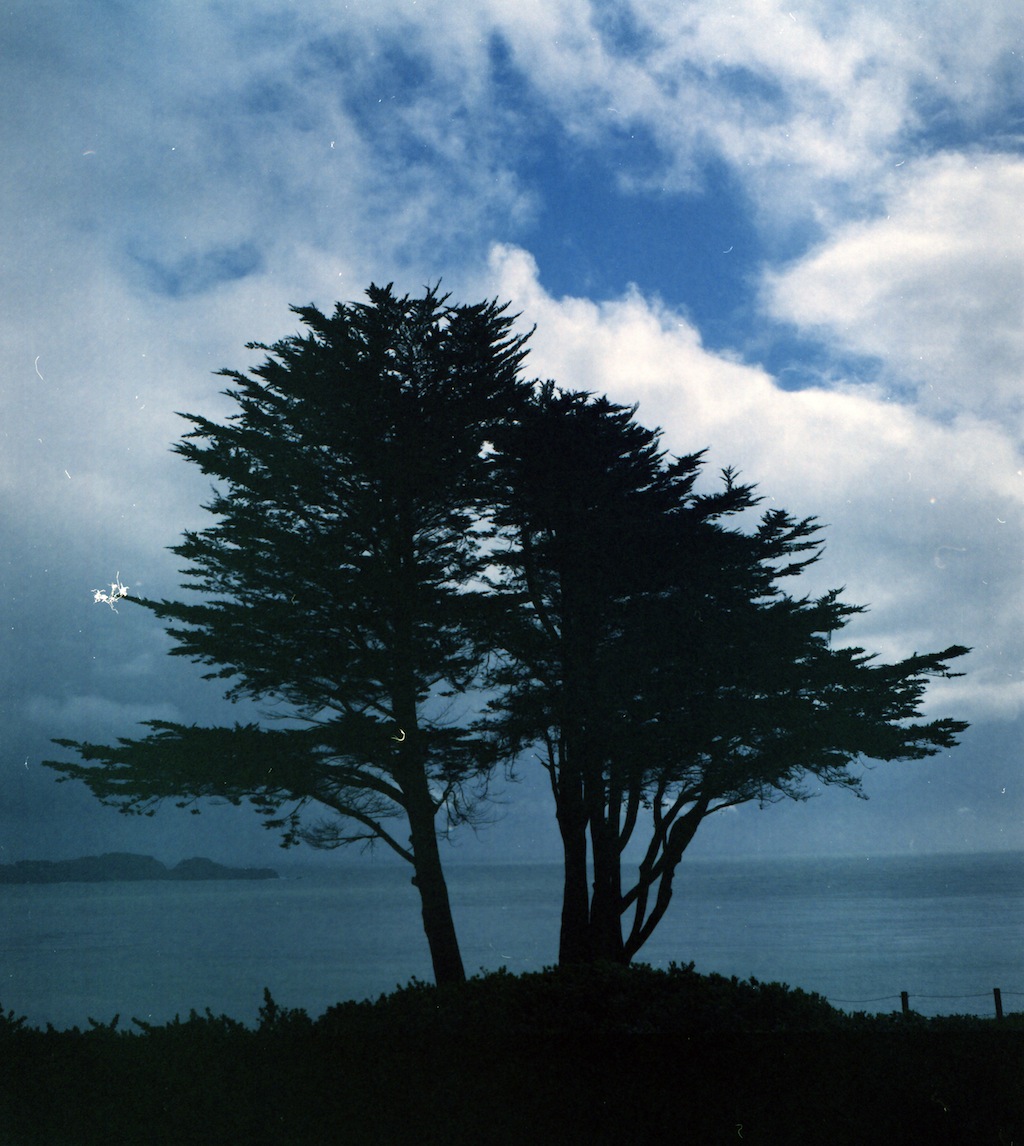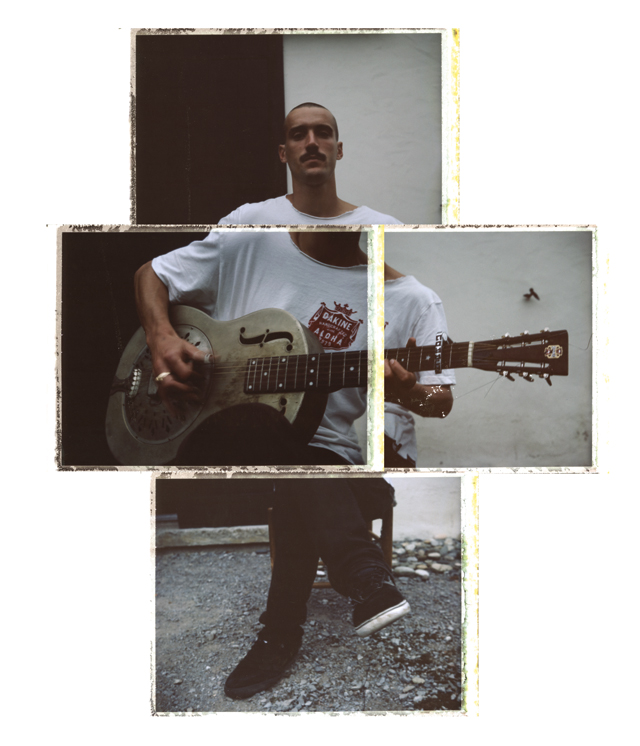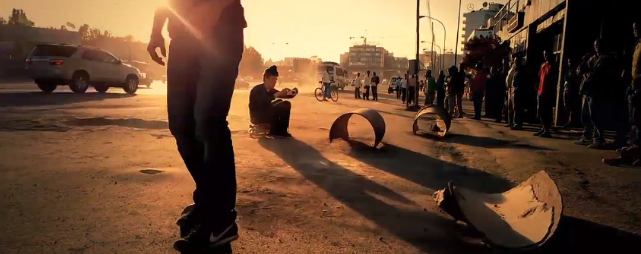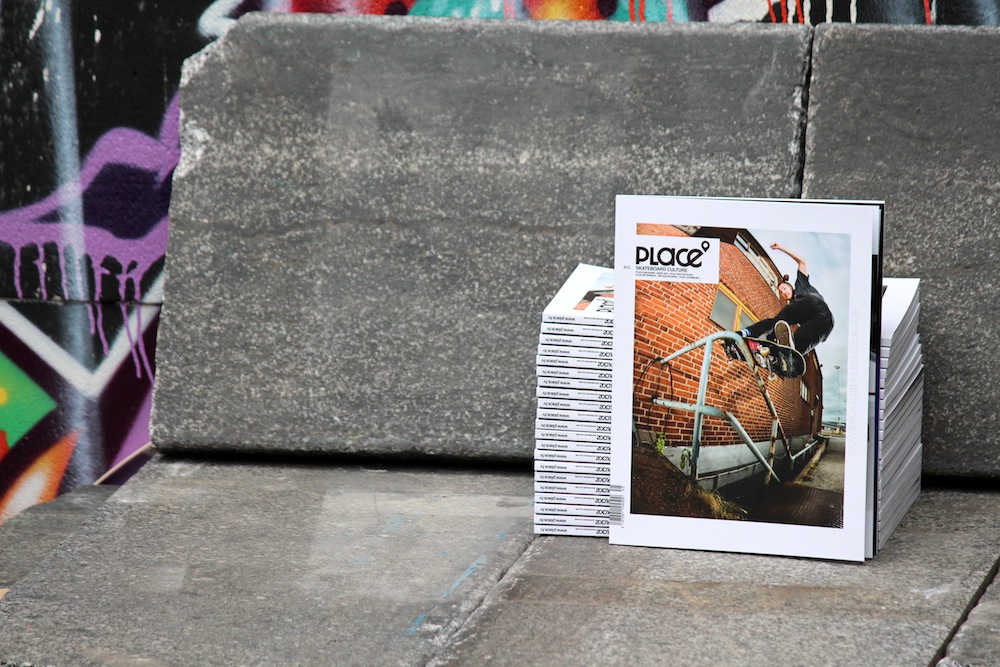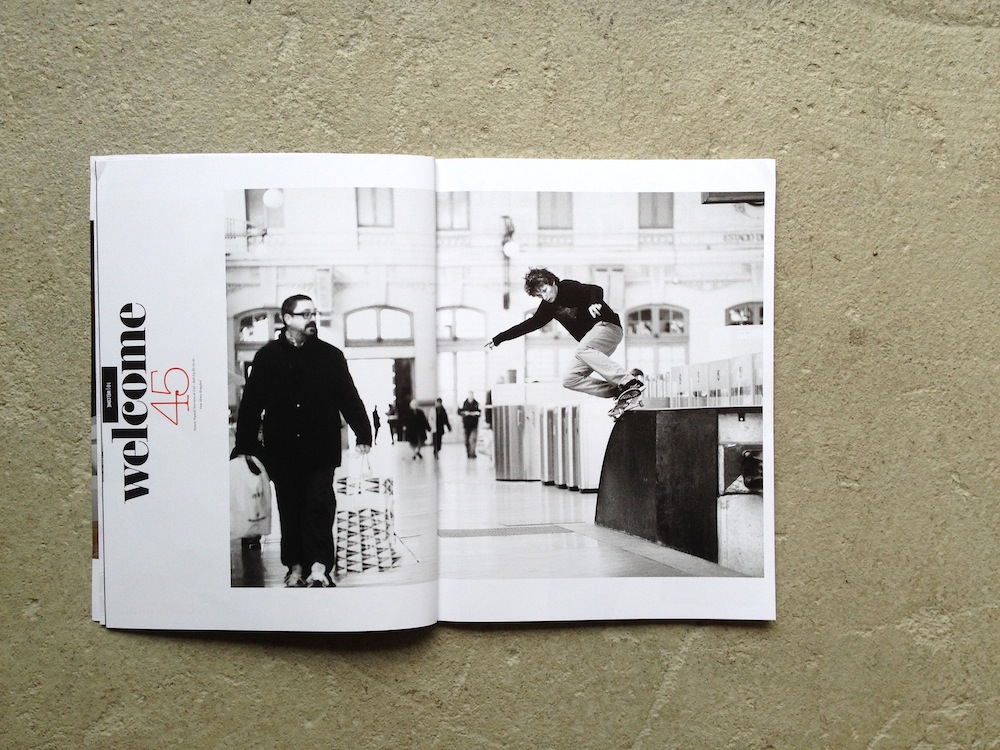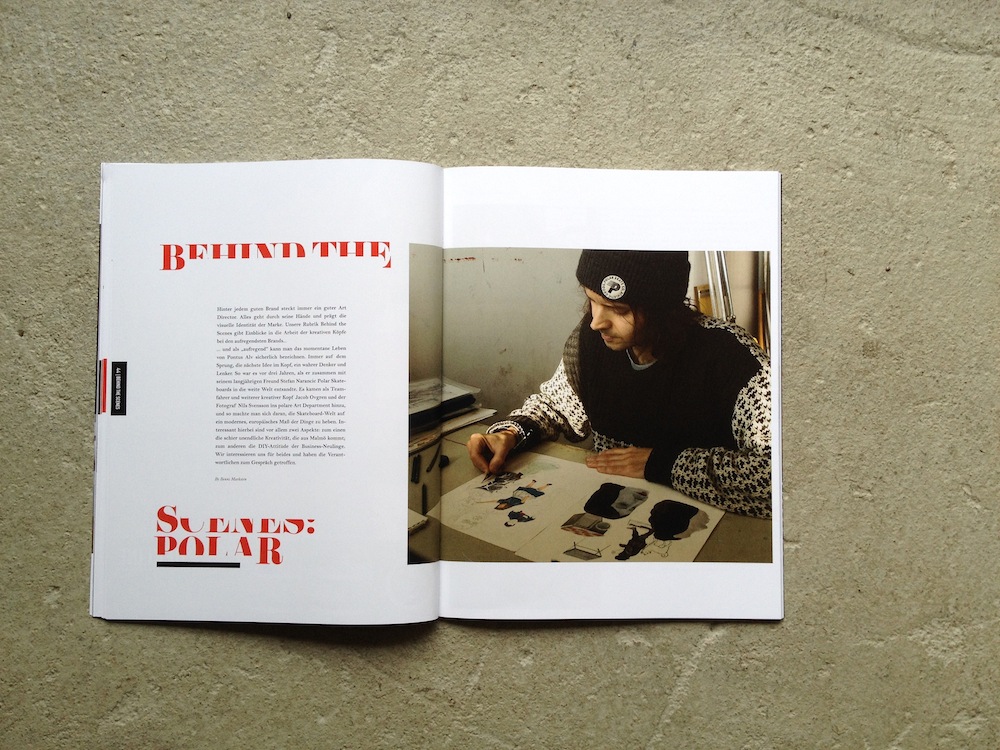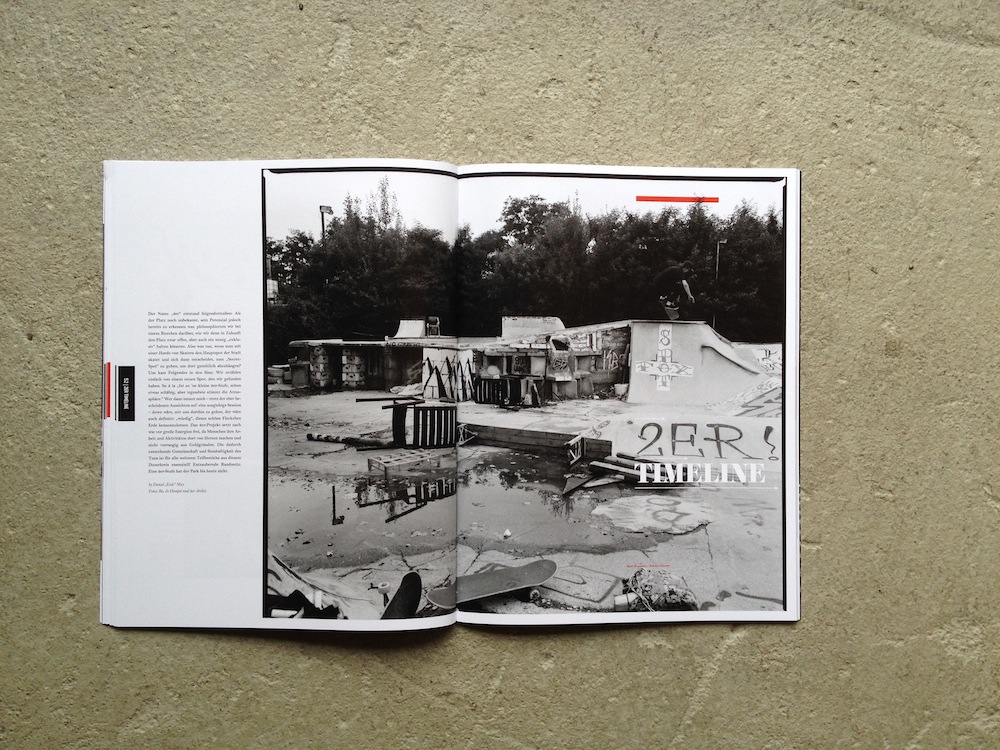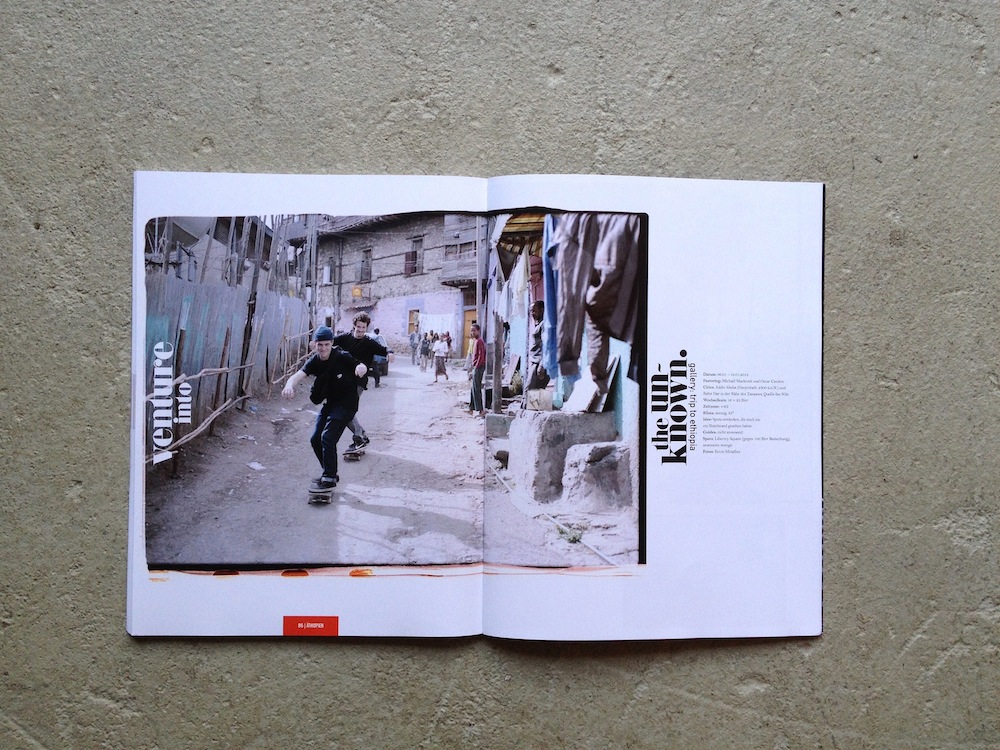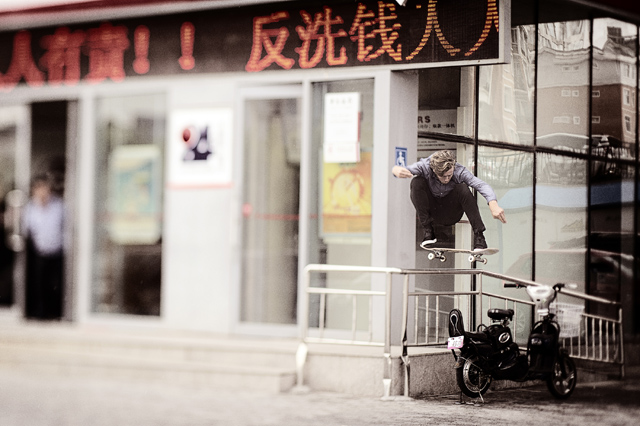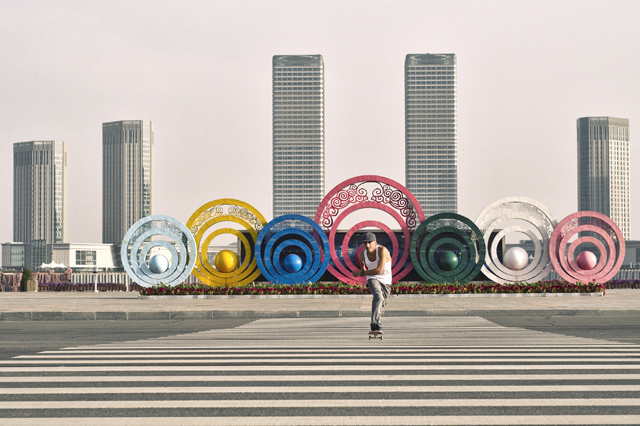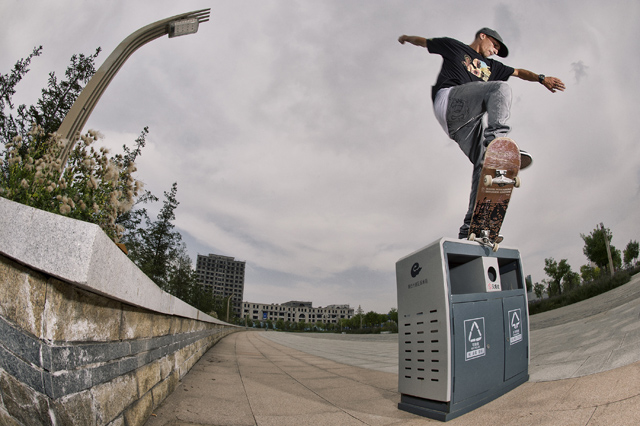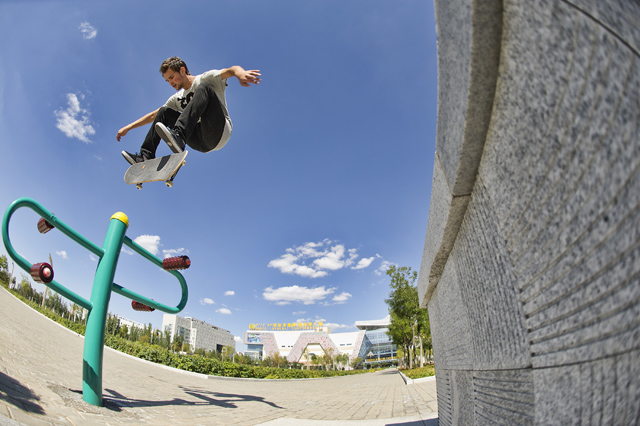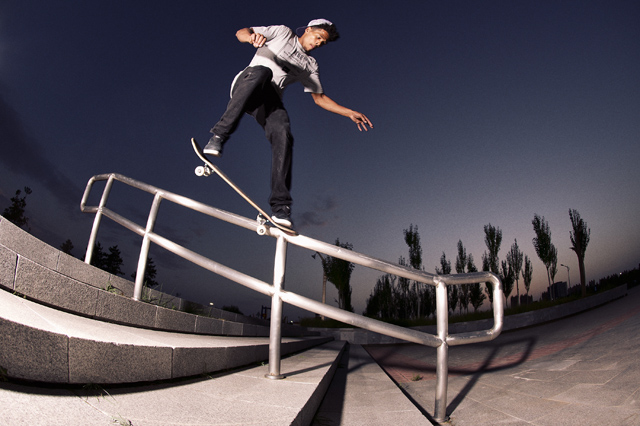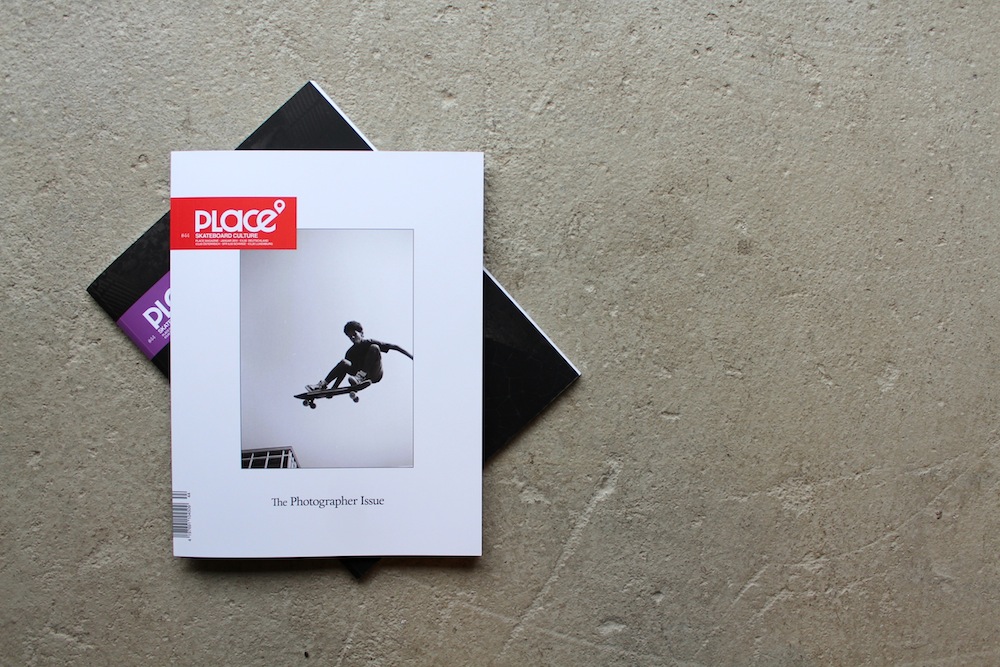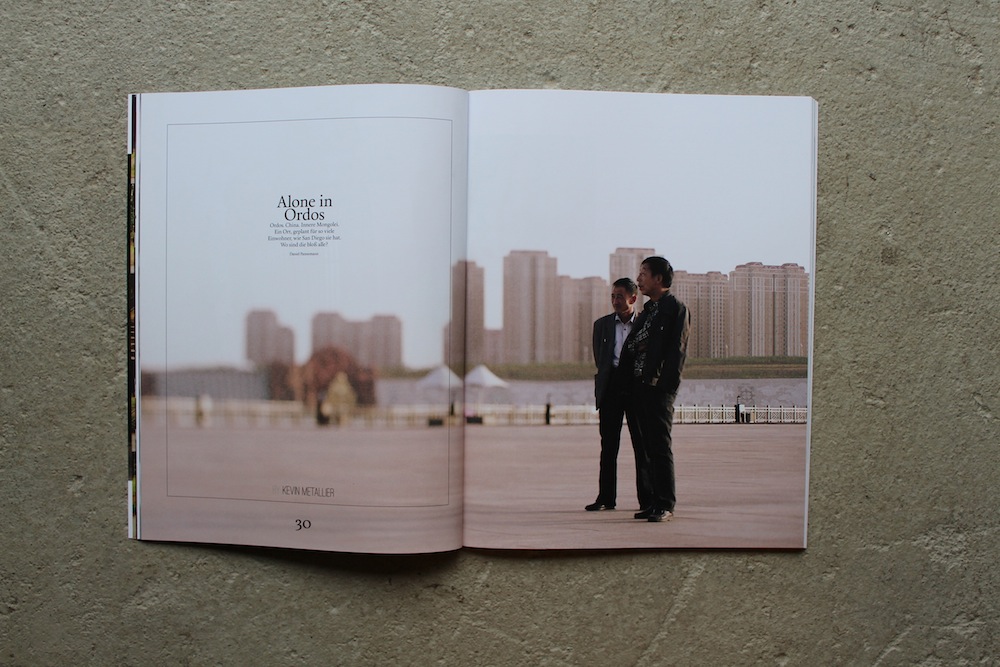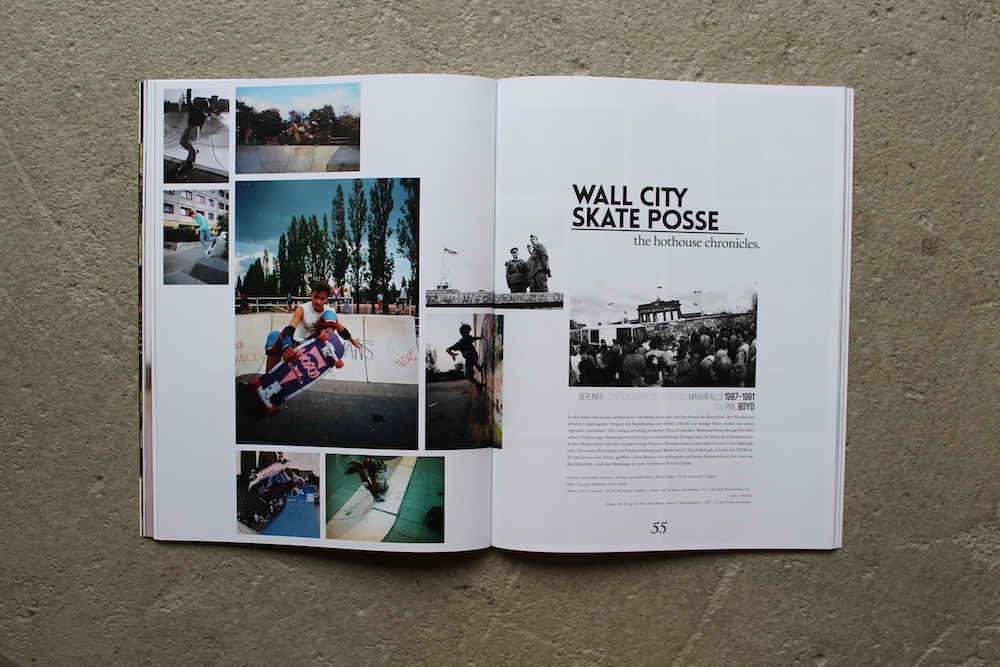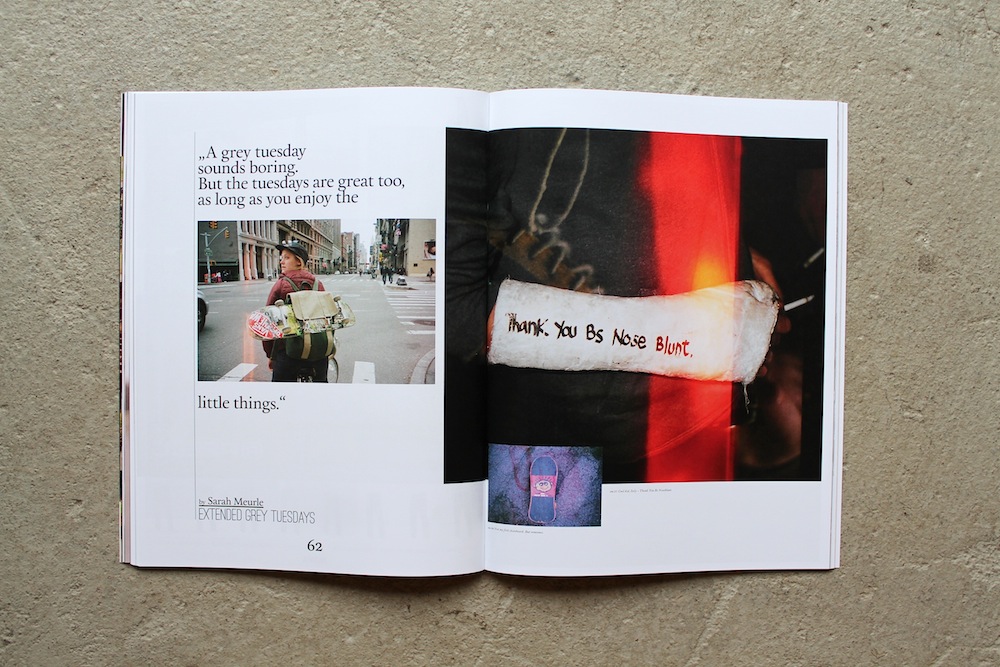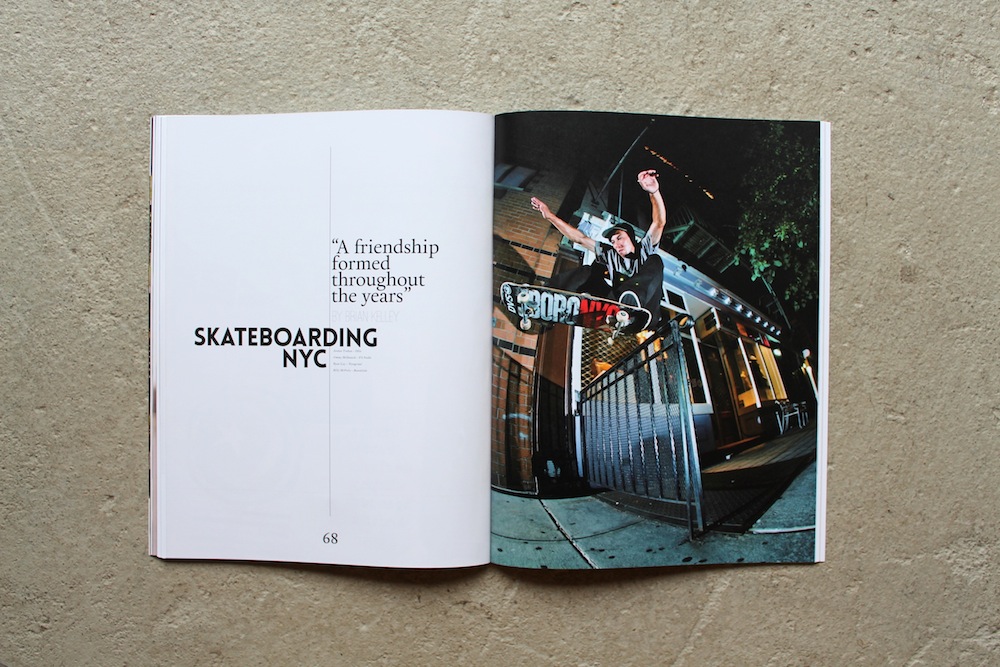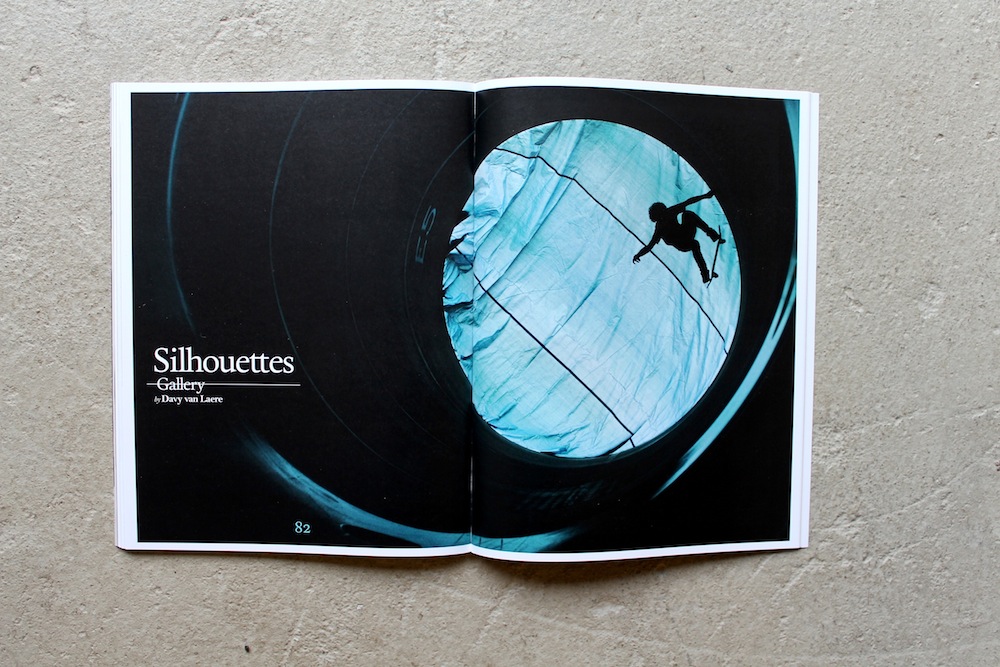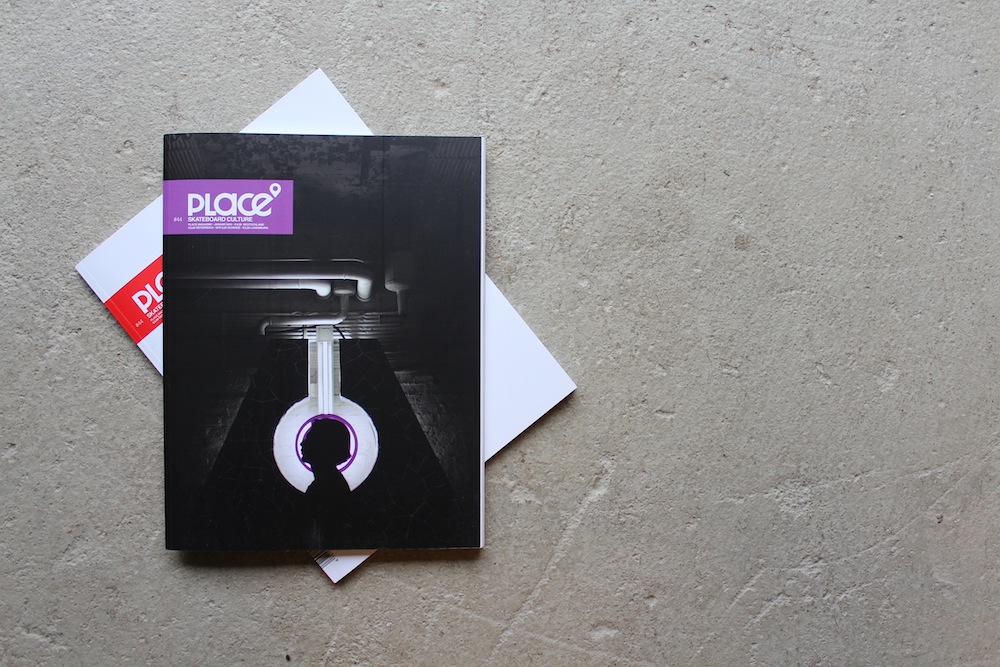Apart from being extremely talented on his board, Brian Delatorre is as happy and cheerful as they come: He will always welcome you with open arms, no matter who you are or how you look, and he will certainly take his time to have a chat with you until all your questions are answered. Brian does not close his eyes and treats a situation how he thinks it needs to be treated. What’s more, he has amazing plans: This man is about to sell everything he owns in NYC so he can go on a six-month filming mission in California. All he’s planning to bring along is a guitar, his skateboard, and a book so he can take notes and write down all the memories he’s going to collect while traveling. Make no mistake: Whether it is a story that happened on the road or simply a few notes about meeting new people during a long European summer vacation, this book got stories for days. Our French man Kevin Metallier sat down with him in Paris to talk about religion, alcohol and wom…, wait, no, no women in this one. What’s wrong, Kevin?
Hey Brian! Good to see you here in Paris, mate! What have you done during the two last months you spent in Europe?
Traveling, traveling, traveling! Keepin’ it moving, all over Europe. We flew back to Paris together from Bishkek in Kyrgyzstan in mid-June. Then I stayed here for about two weeks. I couldn’t really skate in Paris because of my ankle. After that, I went to Berlin for a week to meet my friend Tjark Thielker.
I had an amazing stay there! It’s always so good to go back there. So, Paris and Berlin. I was only traveling by myself, visiting friends, you know? And then, after Berlin, I met my crew, The GX1000 crew, in London, Jake (Johnson), Al (Davis), Jonie (Cruiz), Ryan and my friend Jahred – he’s a photographer from L.A., and we spent two weeks together in London. It was really good, lots of good skating and surprisingly, it was really good weather there. It was very sunny every day! So even if I wasn’t really skating 100%, it was okay for me.
Then we moved on, the entire crew, to Barcelona for two weeks. At the end I stayed there by myself for the last four days. Then I flew back to Paris again for five more days; it was really fun too, with Kevin Rodriguez and my friend Juan Saavedra. There are so many people I have met during this trip, even people that don’t skate, and it’s never been goodbye, I’ll be back here! Then, after Paris, I had the opportunity to go to Helsinki for the Hookup and visit my friend Marius (Syvanen) for a few days. It was my third time there, and it was probably the best one.
The summer over there is like BOOM! Everybody is enjoying the three or four months of sunlight, partying, drinking, because after that it’s just darkness. It was really cool to spend time with all the homies again and I guess I was up maybe 17-18 hours every day there. Honestly, I saw the sunrise every morning! And all this without drinking. After that, back to Paris for almost a week and then finally back to NYC.

Did you write a lot in your road book as usual?
A lot! I always do. Write about my journey, people I have met. It’s just to have some memories, to keep something on paper, to remember some precious moments. It’s been amazing! Each moment has been just as amazing as the last, but it’s moving so quick. Each moment is just as profound as the last one and I am really conscious, aware about that. But I keep forgetting about some of those precious instants, and I need to write down as much as possible.
And especially on this trip, because I’m away from home for quite a long time and I guess when I’m going to get back to New York, it’s gonna be like whoa! Too much stuff has happened to me during this adventure in Europe. It’s been mind-blowing! The people that I’ve met, the connections I have made with people, people that I have touched and they touched me… Some really amazing stories!
You told me that you’ve decided to give up your room in New York? Why? What’s your plan?
Well, I think the reason why I gave my room up in New York is because all of that. I had, like, an epiphany or something. During that trip in Europe, everything was very intense and I was like, okay I want to keep going. Actually, at the beginning when I arrived in Europe, I rented out my room in New York for three months, that was my plan. But then, a while ago, during my trip here I realized that I didn’t really need my room anymore; I don’t need all the things that I have accumulated over the last couple of years since I have been there.
I’ll get two weeks in NYC to gather and sell pretty much everything I have and also to give things away to my friends. So from now on I’m gonna be a homeless skateboarder with two bags, a guitar and a skateboard, traveling across the country to San Francisco where I’m going to work on the video with my friend Ryan Gee, where I should stay for about six months maybe. I’m pretty much hyperactive when I’m in California, always skating, bombing hills, getting coverage.
Out there, it’s very easy to meet up with friends to skate or photographers to shoot photos. It’s not that easy in New York I have to say, you need to schedule things there. So, from now on I would say that I am a free homeless man! And me and three of my good friends, we’re going to cross the States from East to West on the northern road in an old Chevrolet Caprice Corvette! I would say that the beginning of the new life, of the real freedom for me, was last May 31st, when I left NYC and arrived at the airport in Paris to join you and all our crew to this amazing adventure in Kyrgyzstan!

What does Europe mean to you, especially after this long trip?
I feel like a European now, really! I also feel like when I’m going to get back to the States in a few days, the transition is going to be kind of hard for me, to be back to the all mind-set and thinking process of how most Americans work. Even if there are a lot of open-minded people in New York, if you compare it to the rest of the country, the laws there are very strict, and it’s not what I would call freedom.
I don’t really know how to explain it but I know that mostly everywhere in the US people are very aggressive and want you to respect the rules under all circumstances, even if it’s not their business. I don’t get the same feeling at all here in Europe, at least I haven’t seen it so far. I would say that the approach here in Europe is different than in the States. In my country the approach is very egocentric, I would say.
It’s like, I have the power – you have to do what I say. I am the man – and you will listen to me. Stuff like that. There is no dimension of human being, like two people talking to each other, it’s as if all the feelings were gone and the only things that count are the rules, the papers and the money. People got a role to play, and they will play it very well, as a security guard does for example. Even if, of course, it’s not like that everywhere and with everyone, it’s definitely the approach you can feel most of the time in US cities.
Once again, I think things work differently here in Europe, and people don’t have the same kind of relationships as in the States. People here are more open-minded, they don’t need to know who you are, who you work for, how much you get paid, to start considering you. I don’t want to give a too negative impression of my country, because in the US you will also find a lot of people who are open-minded and welcoming.
But I have to say that in my country, for most of the people, you have to show them who you are before they start to open their door to you. And honestly, I think that here, after all the trips I’ve done all over Europe, all the people that I have met, things work really differently. If you come to Europe, you don’t really need a plan, you can figure out things with the people meet along the way, whereas if you come to the US, you do need a plan.

So do you think you could live in Europe one day?
Yes. Absolutely. What I would probably miss is my family, obviously, and my really close friends, but I could definitely come and live here in Europe. There are actually three places where I’d be glad to live: Berlin, Barcelona or Paris.
And what do you think are the main differences between the East and the West Coast in the States, since you’ve lived on both sides?
Well, let’s compare SF and NYC, as I have lived in both cities. For me NYC and the East Coast is more raw. Fast, stressful, gray. There is no one there that’s taking shit from anyone, a lot of selfish attitude and you can feel a lot of tension through all the Big Apple. This city is moving so fast, there is people from all over the world, a lot of different cultures as well, it’s a clash of energies.
In the streets of New York you can see a lot of people who are just bored to be there, who don’t have the spark in their eyes anymore. Lots of people are in their own world, they don’t want to talk to you, they don’t want to interact with you. On the West Coast the spirit is different, when you meet someone it’s more like, “Hey, how are you? Nice to meet you.”
People are smiling, there is also more contact with nature. Lots of people are constantly aware of how they interact with people, of the environment, of what they put in their bodies, the quality of their food. Don’t get me wrong, there are shitty people in San Francisco too, but for the most part, whenever I’m there, the energy I can get is way more positive than in NYC. That is just my own experience and my own feelings.
For me, everything is temporary, nothing is permanent, so I couldn’t say that I will get back to SF and live there forever, but I have experienced New York and I know now that SF fits better to me, especially since I have stopped drinking.
Why did you stop drinking alcohol?
I was at a bar and I was wearing a Halloween costume. I was drinking my fourth pint and I started looking around. I just said to myself, at this precise instant: what am I doing? I do this every day, why am I here? I can go over here, talk to this person, talk to the other one too, drink, drink, drink, get happy, high, very high and then tomorrow morning, everything is gone. Why am I depressed? Everything is going good for me. Why do I feel this way? It was mainly because I suddenly realized all of that, that night of the 31st of October 2013.
And so, what’s different now, since you don’t drink anymore?
Everything! The way I view life. The way I meet people. The way I’m gonna act with everyone. I’m not saying that I was a bad person before; I was just as happy when I was drinking than I am now, but then always came the low and now, there is no more low. Life is amazing, beautiful, and I want to enjoy it, every little piece of it, as much as I can. Compassion, love, that’s all that matters!
I cleared up my mind, and I see the way I want to go on in my life. This path, this journey that we are all going through, we are the stars of our own movie, each of us, I see it clear now. I don’t want to judge anyone. The way I look at people now is way different compared to when I was drinking. Now I’m also practicing and applying to my life some philosophic values. Love and enjoy life.
I’m not going to put any label on this philosophy. Religions are religions. For me, religion is just a method, you never have to become a slave of any religion either. I have so much hope for humanity but I can’t believe what horrible things people are able to do in the name of religion.

So did you find the Horizon (in reference to the Habitat video, Search The Horizon)?
Ha-ha, yeah, I guess, and I see it very bright and infinite.
Let’s quickly talk about this trip we did together in Kyrgyzstan…
Well, this trip was pretty interesting to me. First of all because I was going somewhere in Central Asia, and I had no idea who is going to join. It’s always good to do this kind of experience with people you don’t know. The only one I knew from our crew was Charles Collet. From the first minutes at the airport in Paris I knew this was going to be fun! And now, I can tell that I wasn’t wrong, this was an amazing trip. The kind of travel that makes your perceptions of life evolve in a good way. If I look back, I would say everything is just really simple out there. Long story short: I’m really glad that I was a part of this adventure.
To conclude, tell me what you would be if you were:
a plant: an Orchid, it’s my mother’s favorite plant.
a drink: Water, cause we are made up of 80% water. Without water, we’re fucked!
a virus: I don’t wanna be a virus! I wanna be the cure to the virus!
a country: Iceland, cause there is almost no one there.
an object: Camera, because you’re capturing moments and saving memories.
a means of transportation: Skateboard, of course, what else?
a word: Profound.
a religion: Taoism, the way of life.
Intro: Daniel Pannemann
Fotos & Interview: Kévin Métallier


